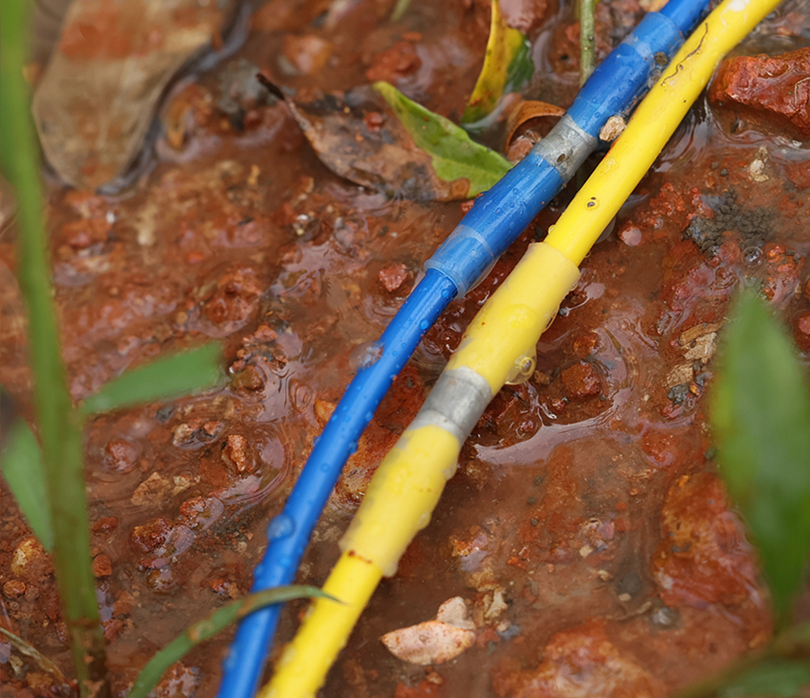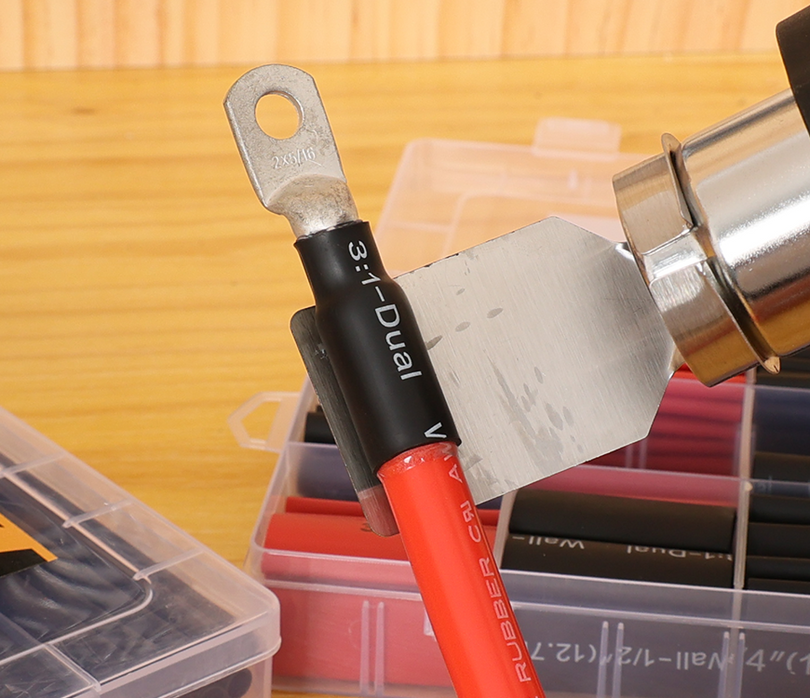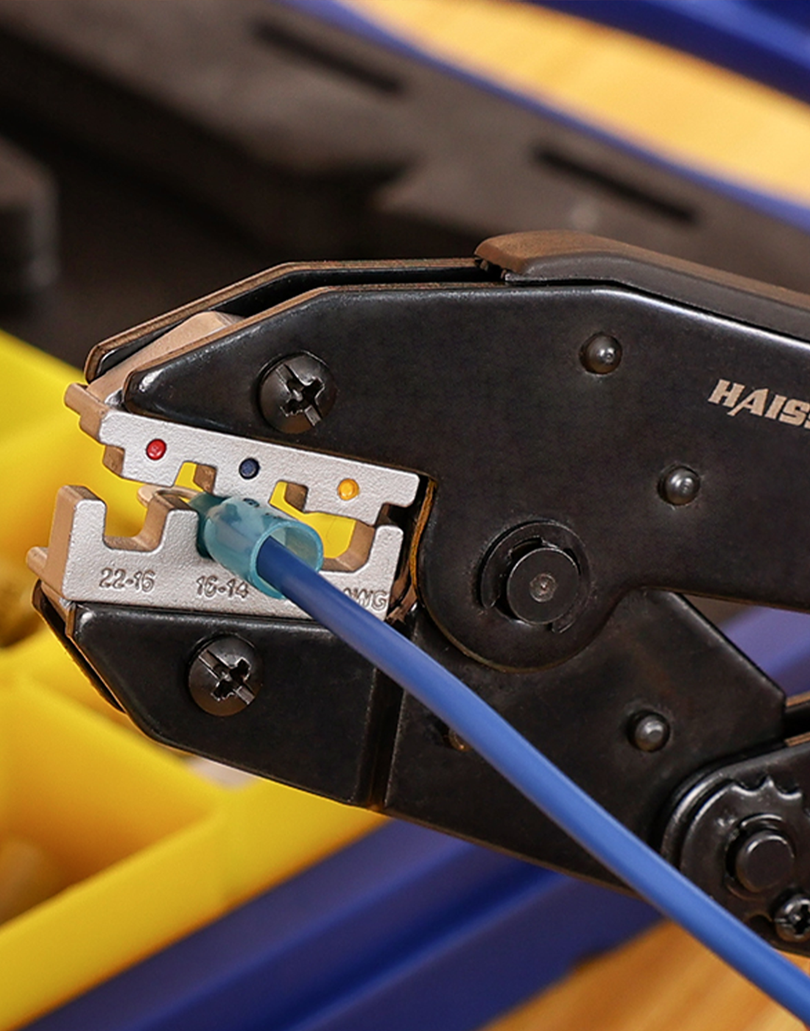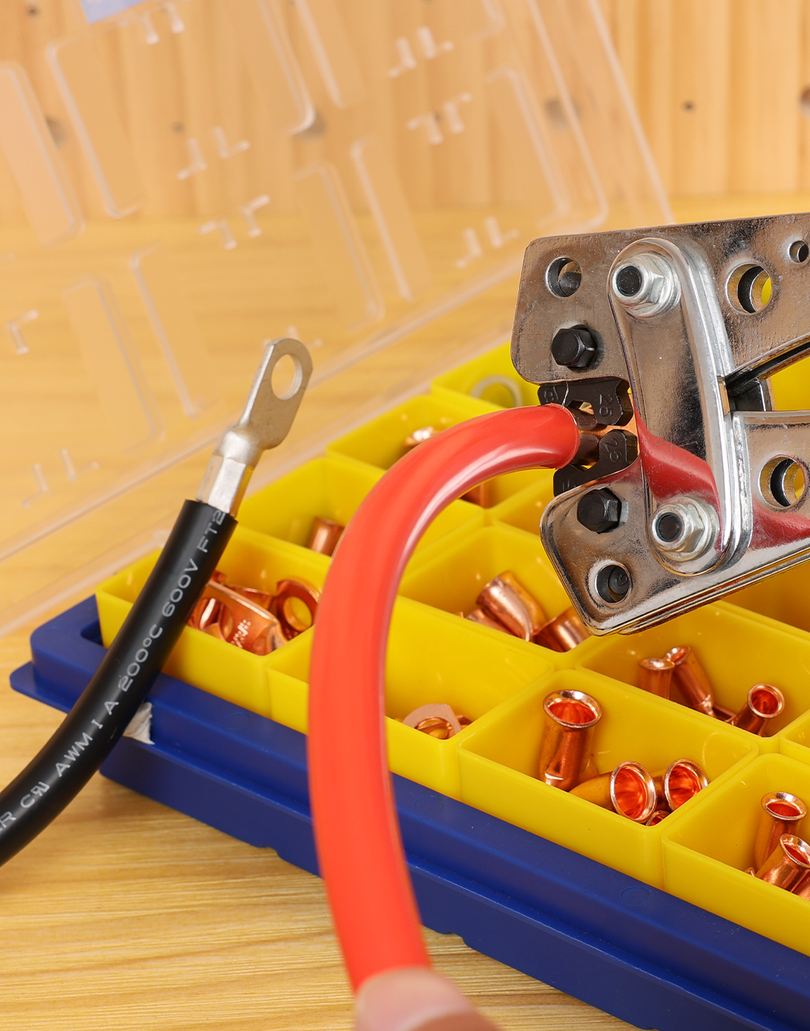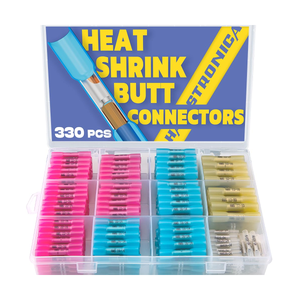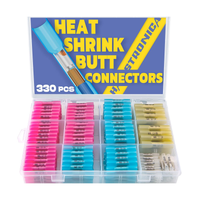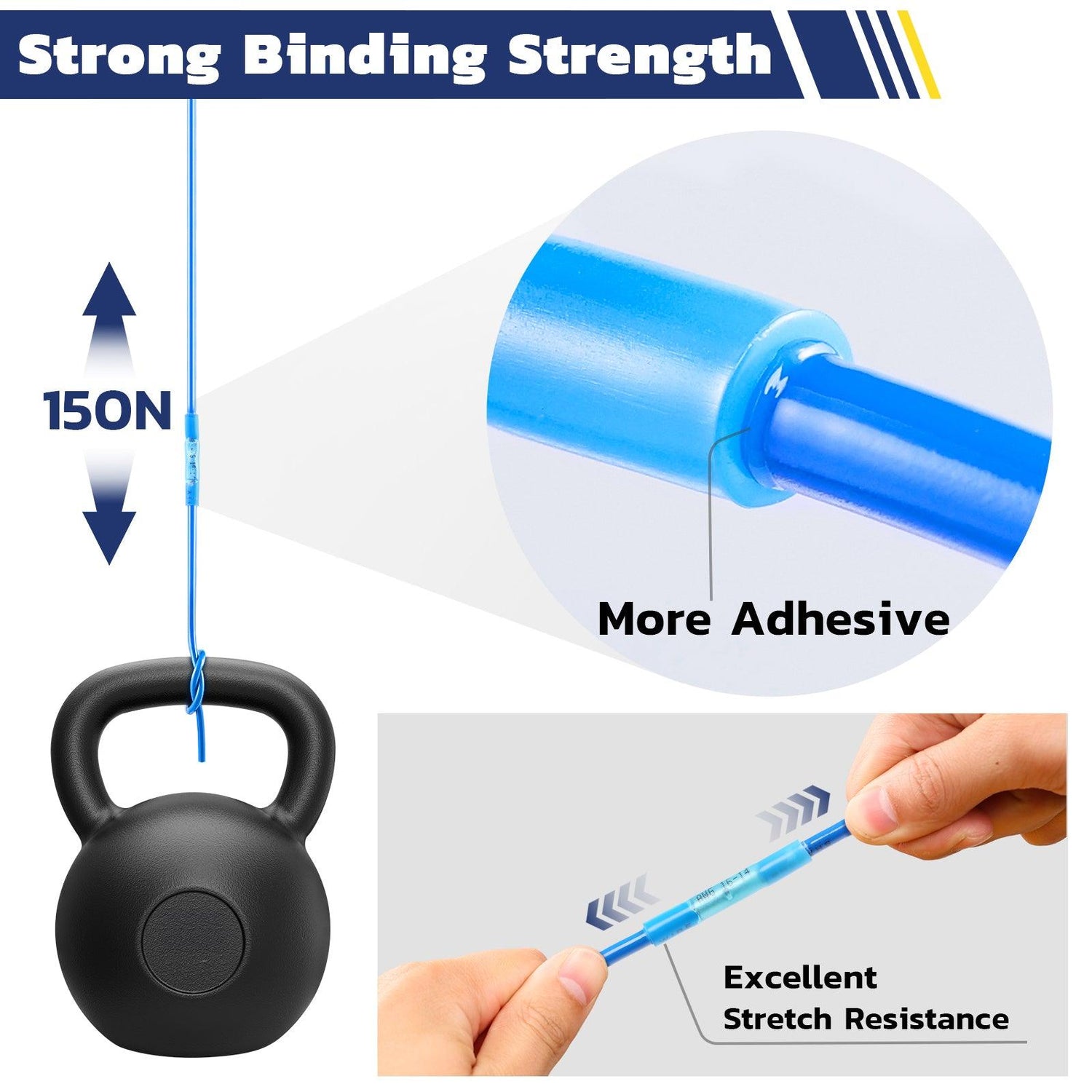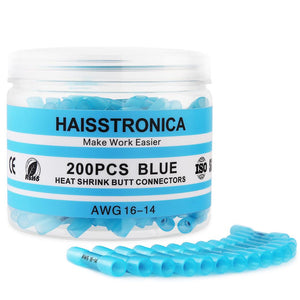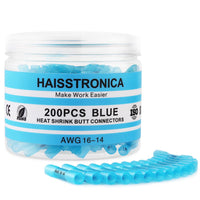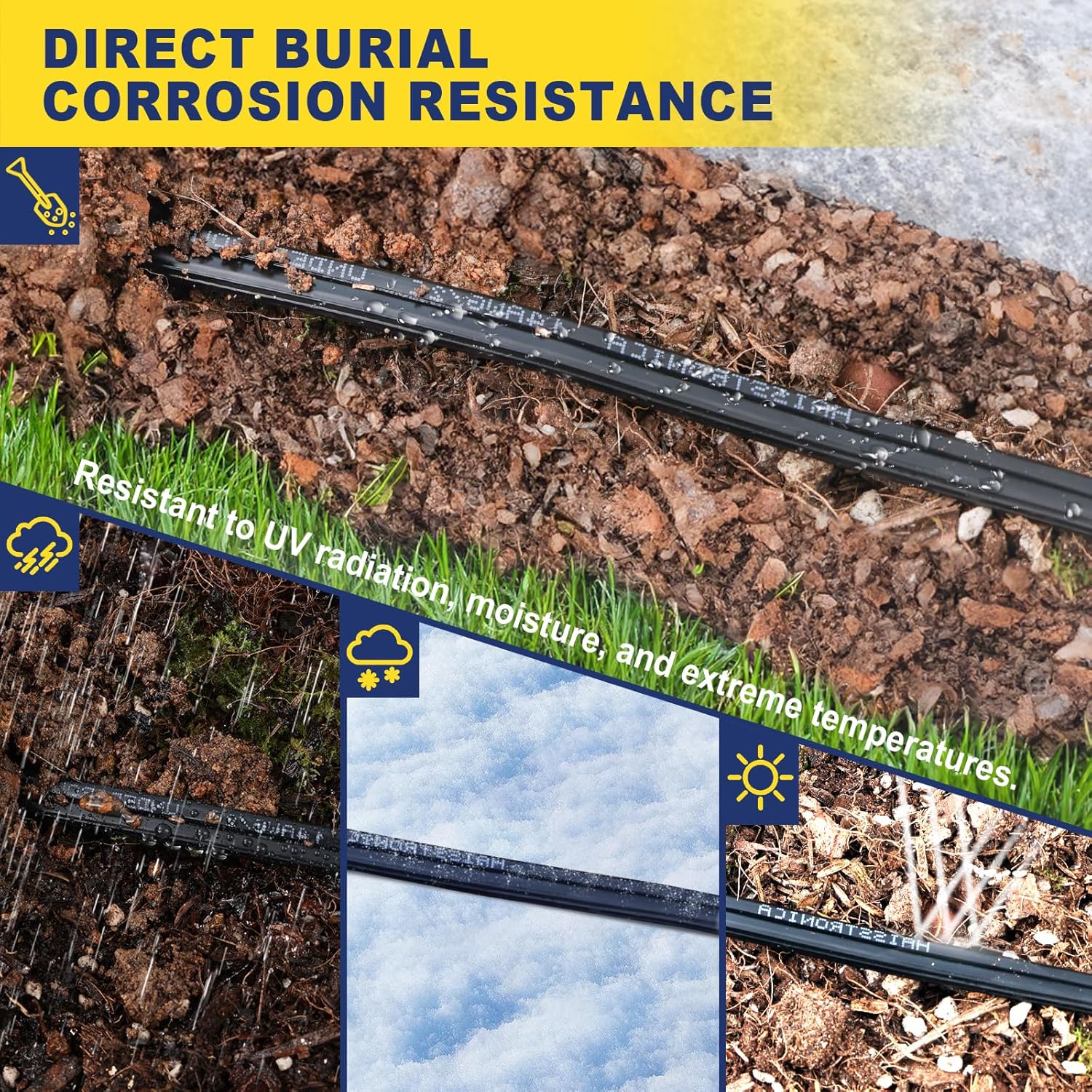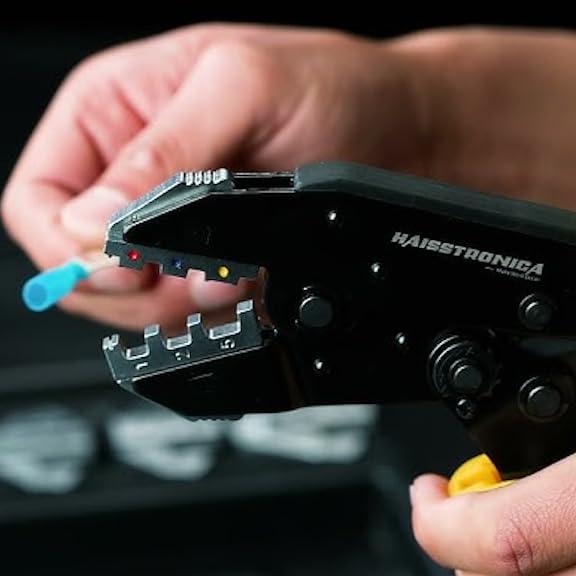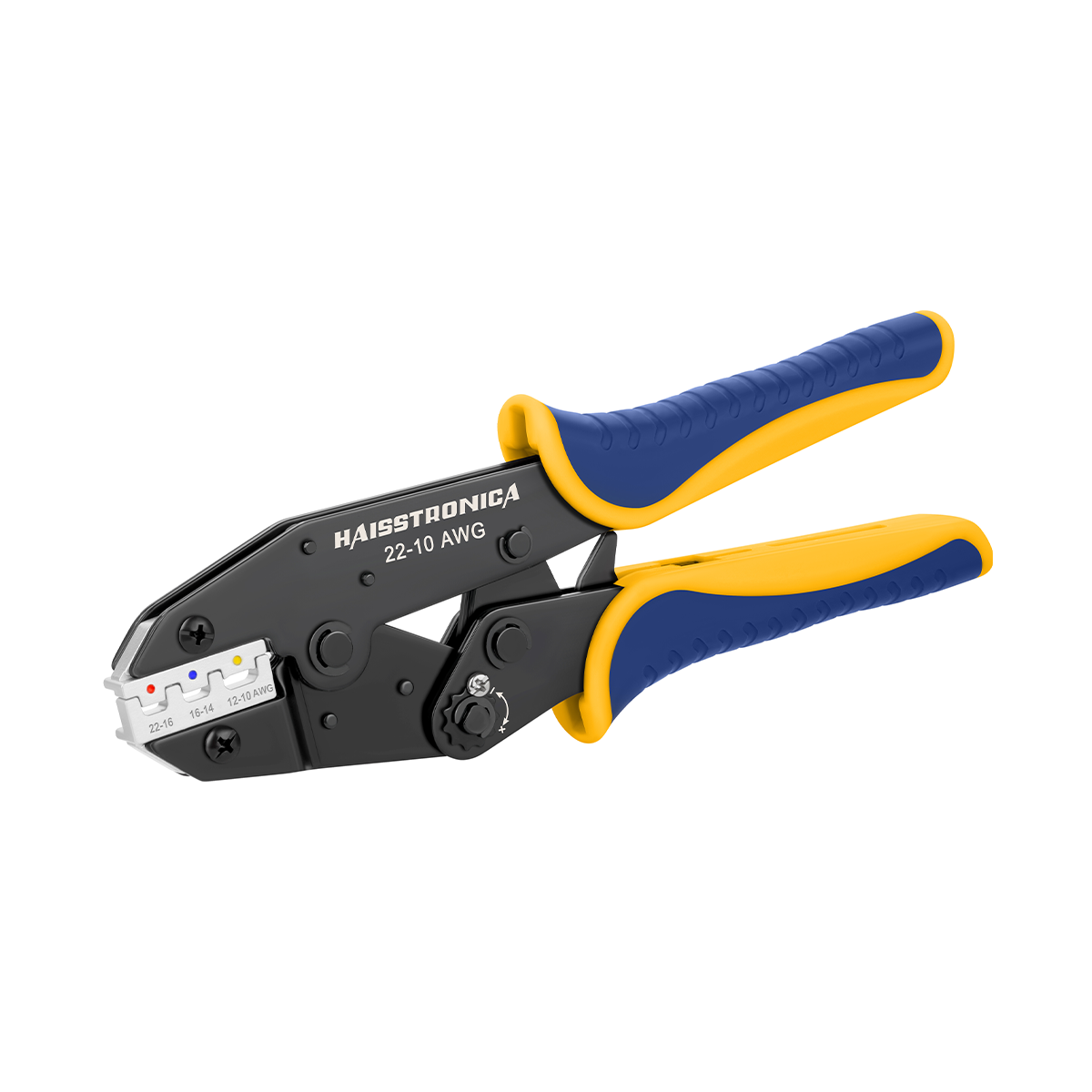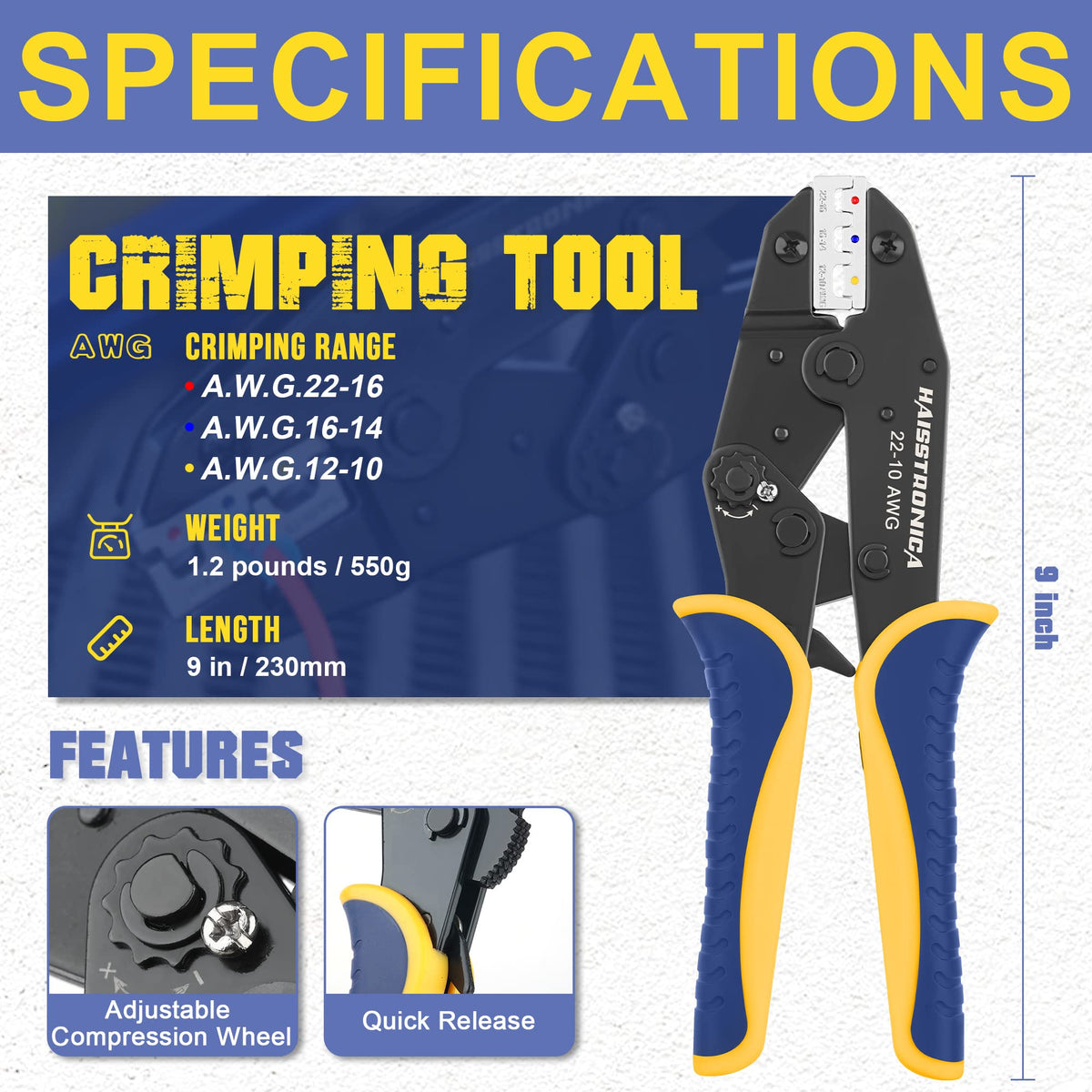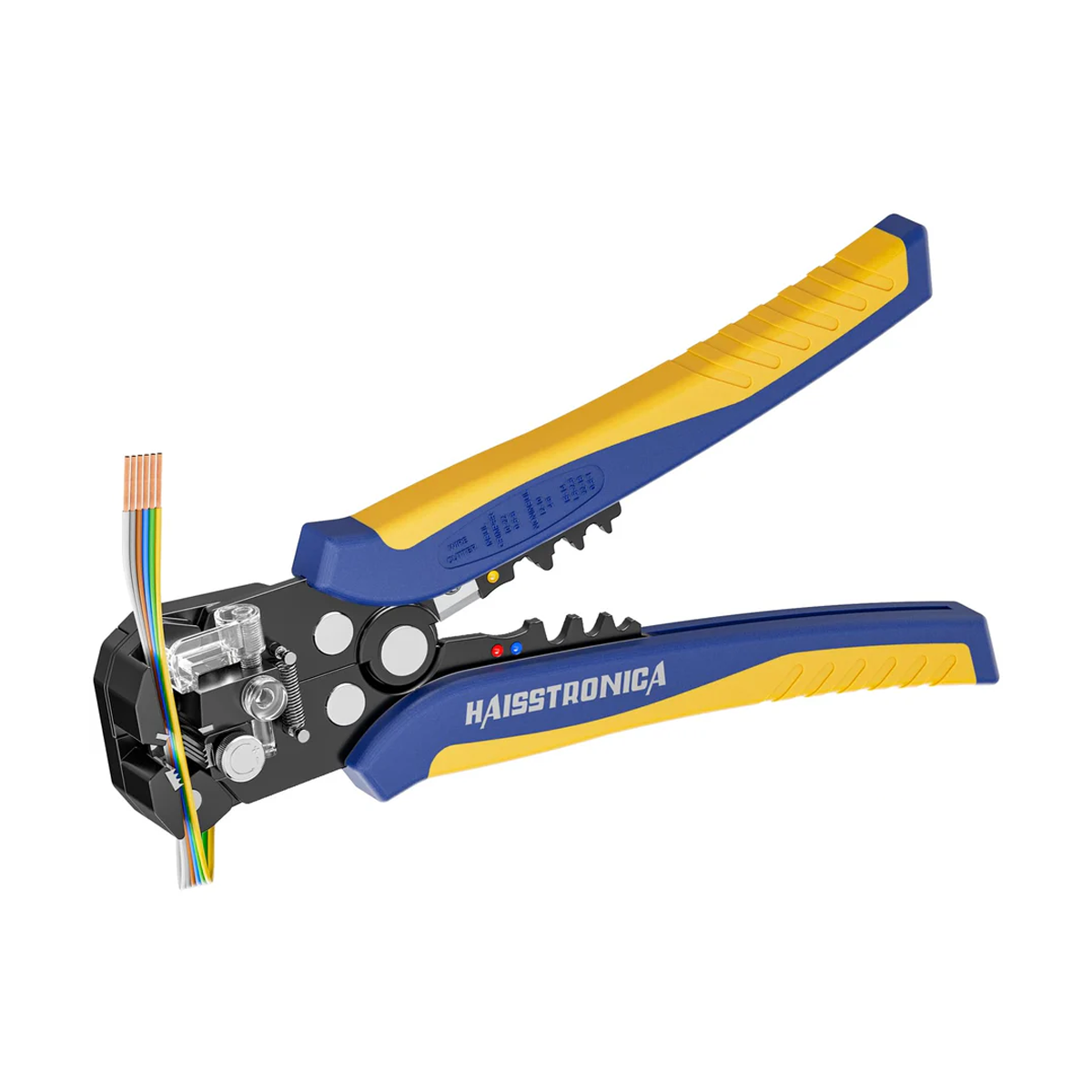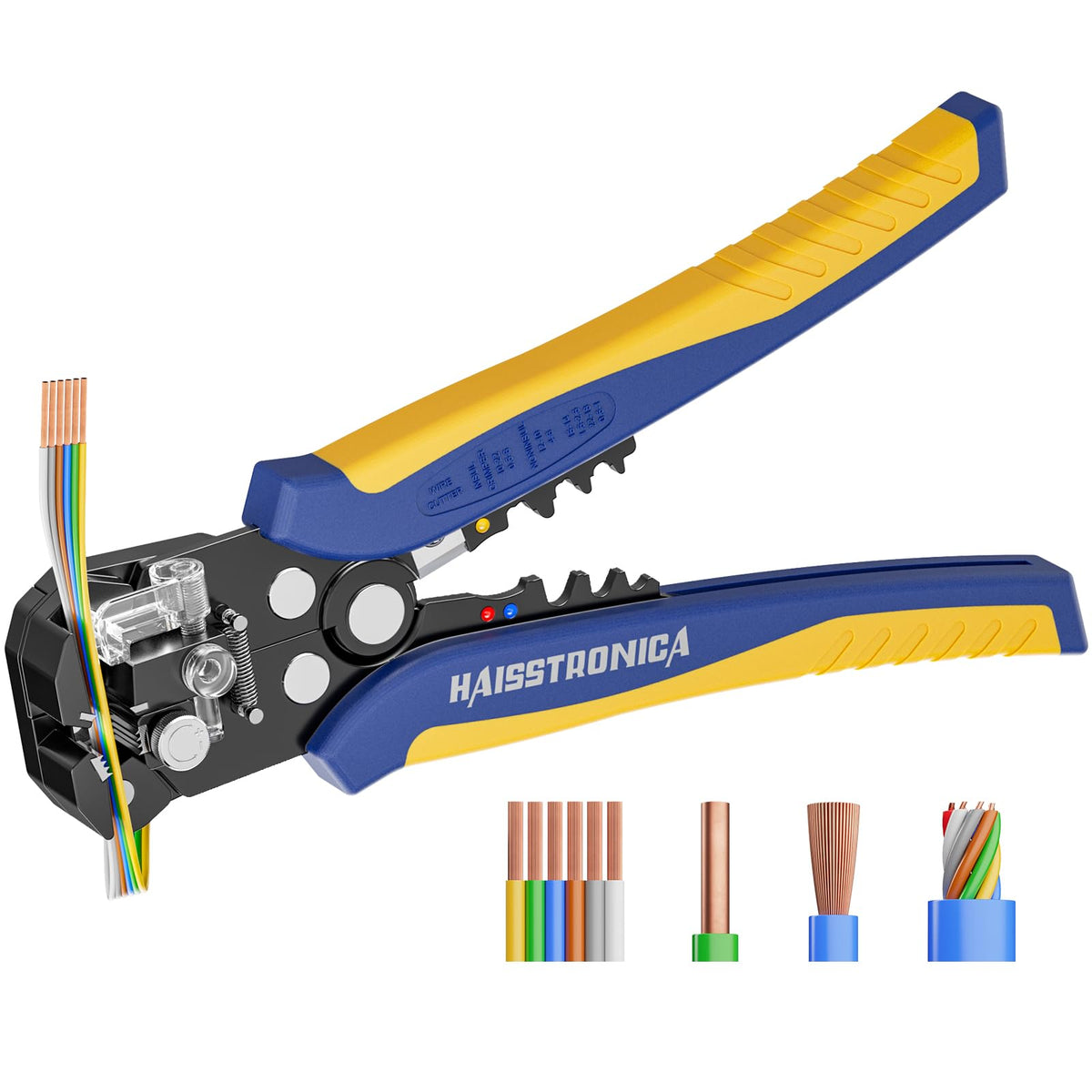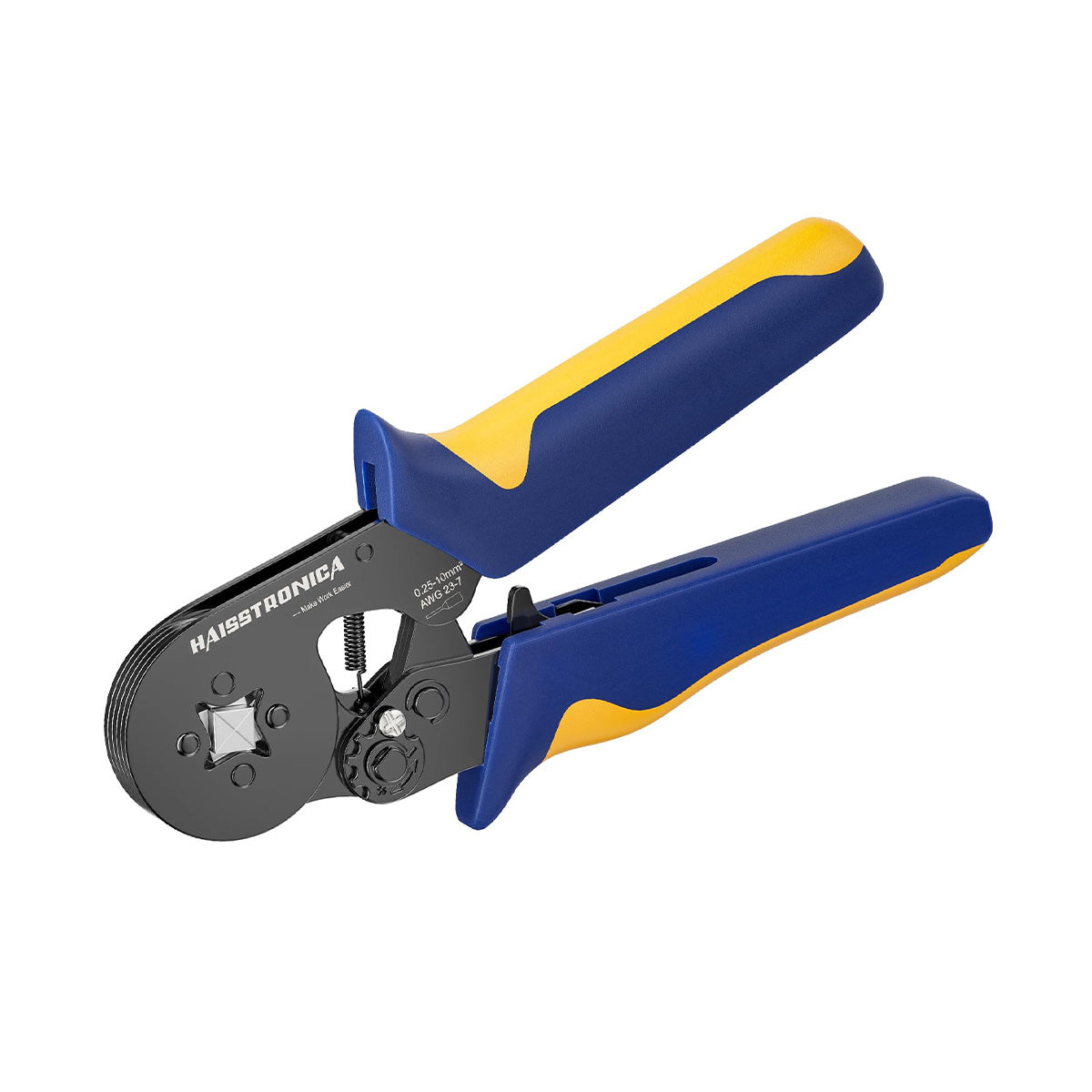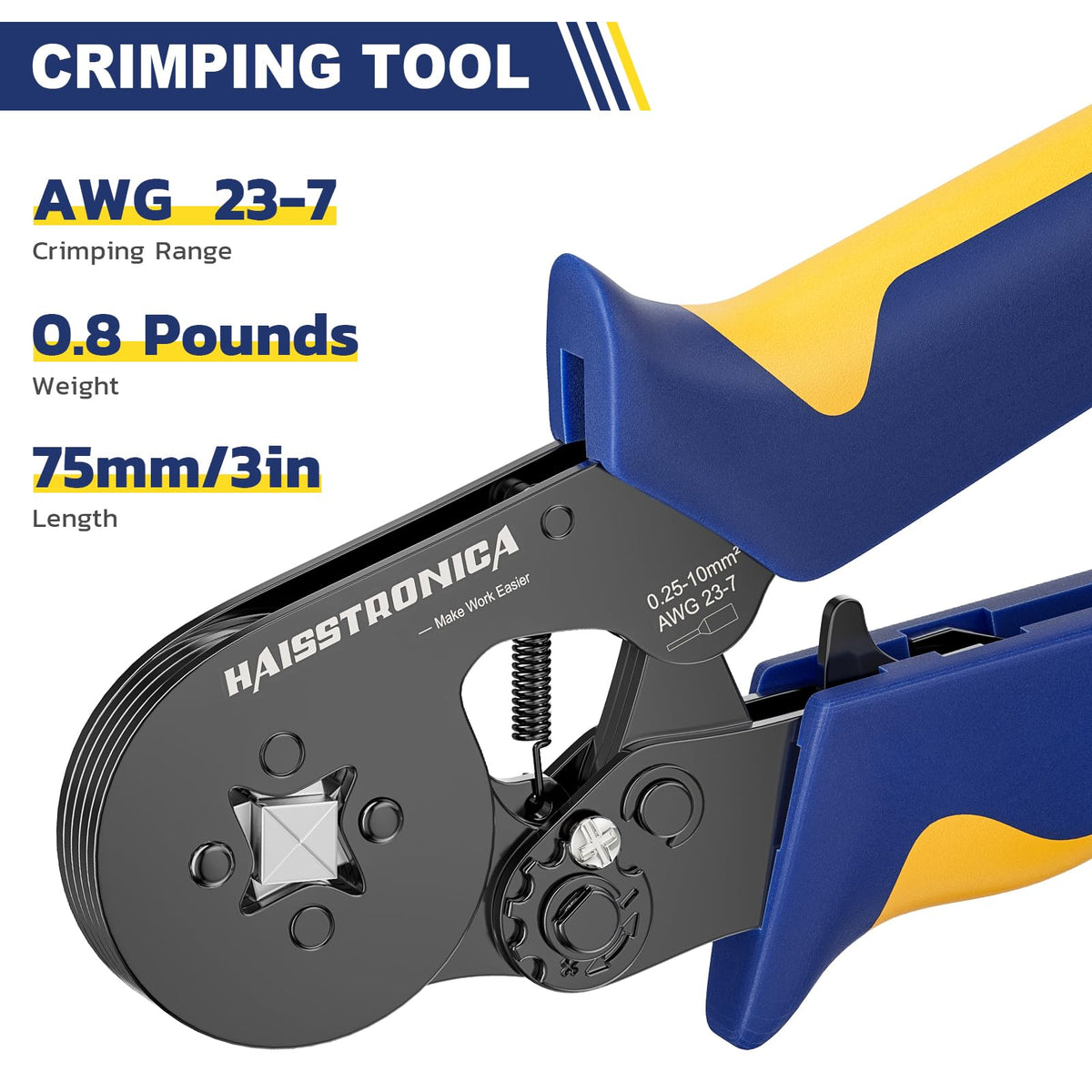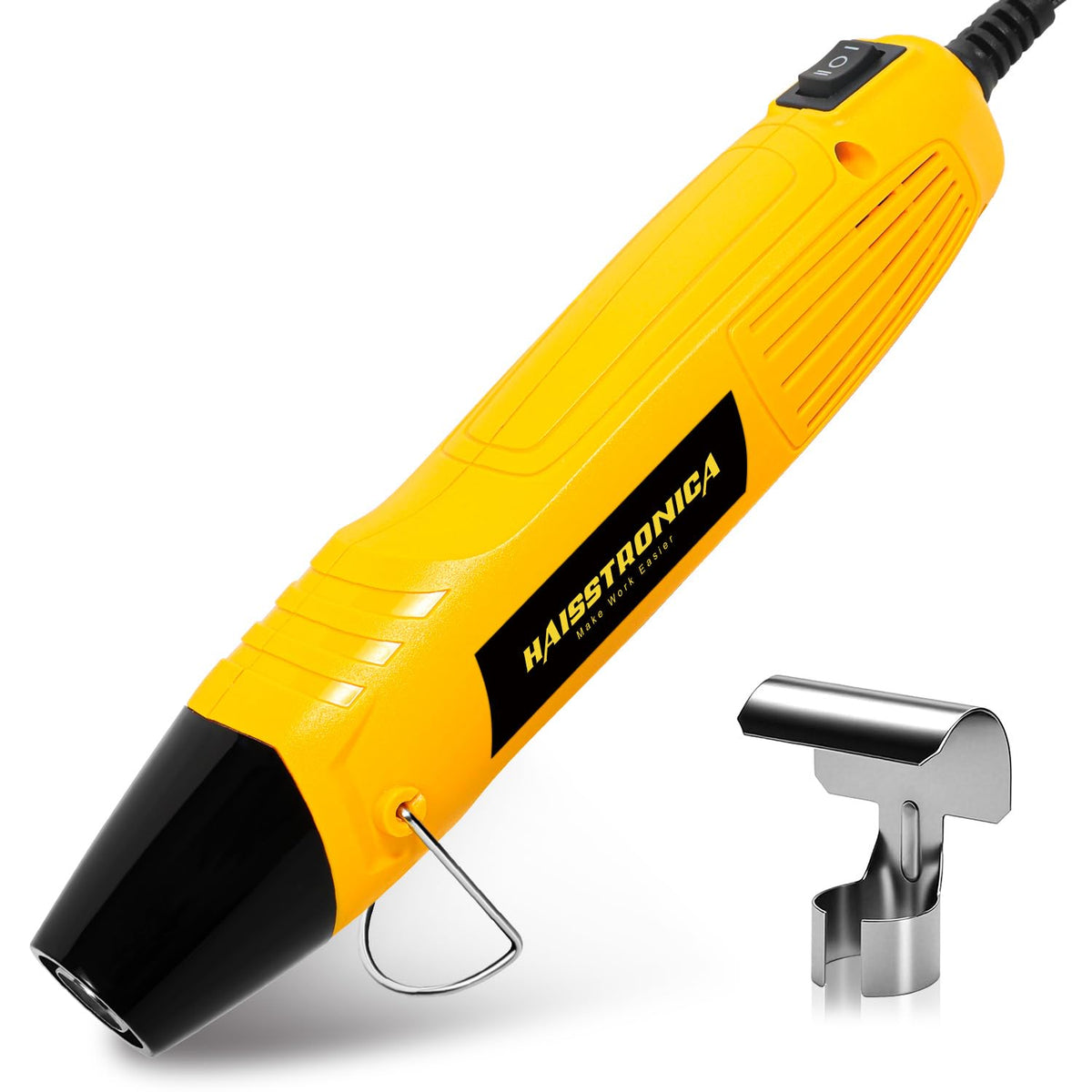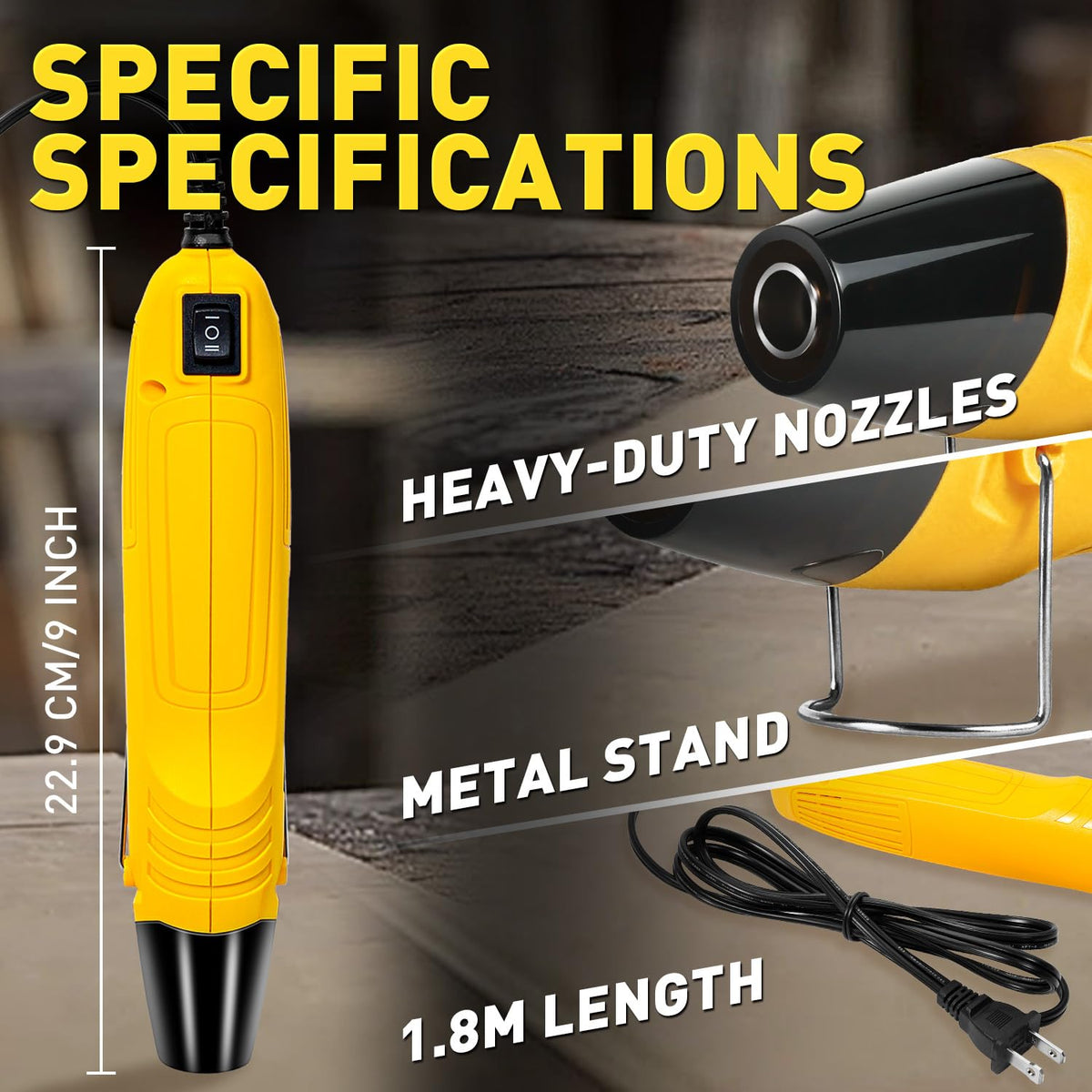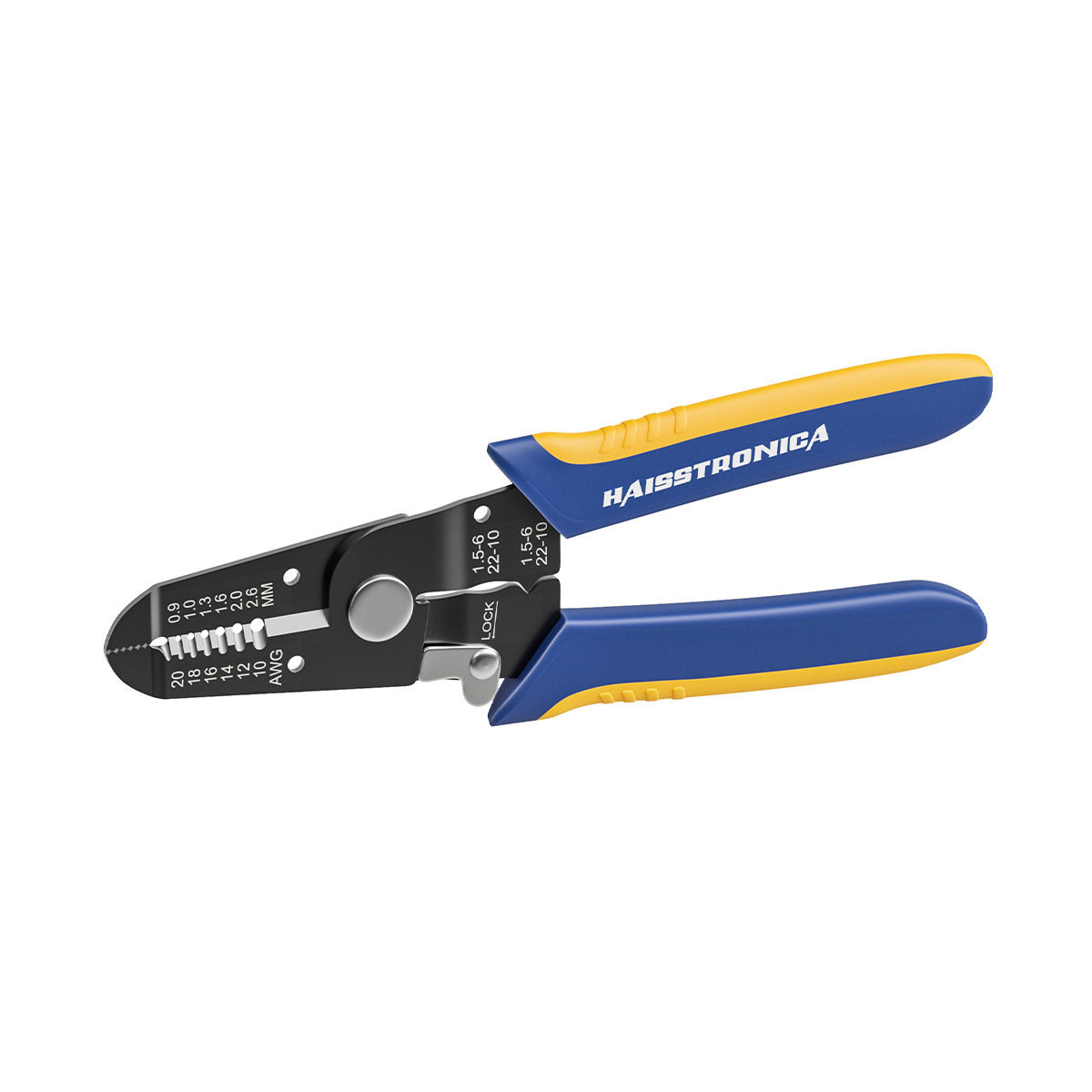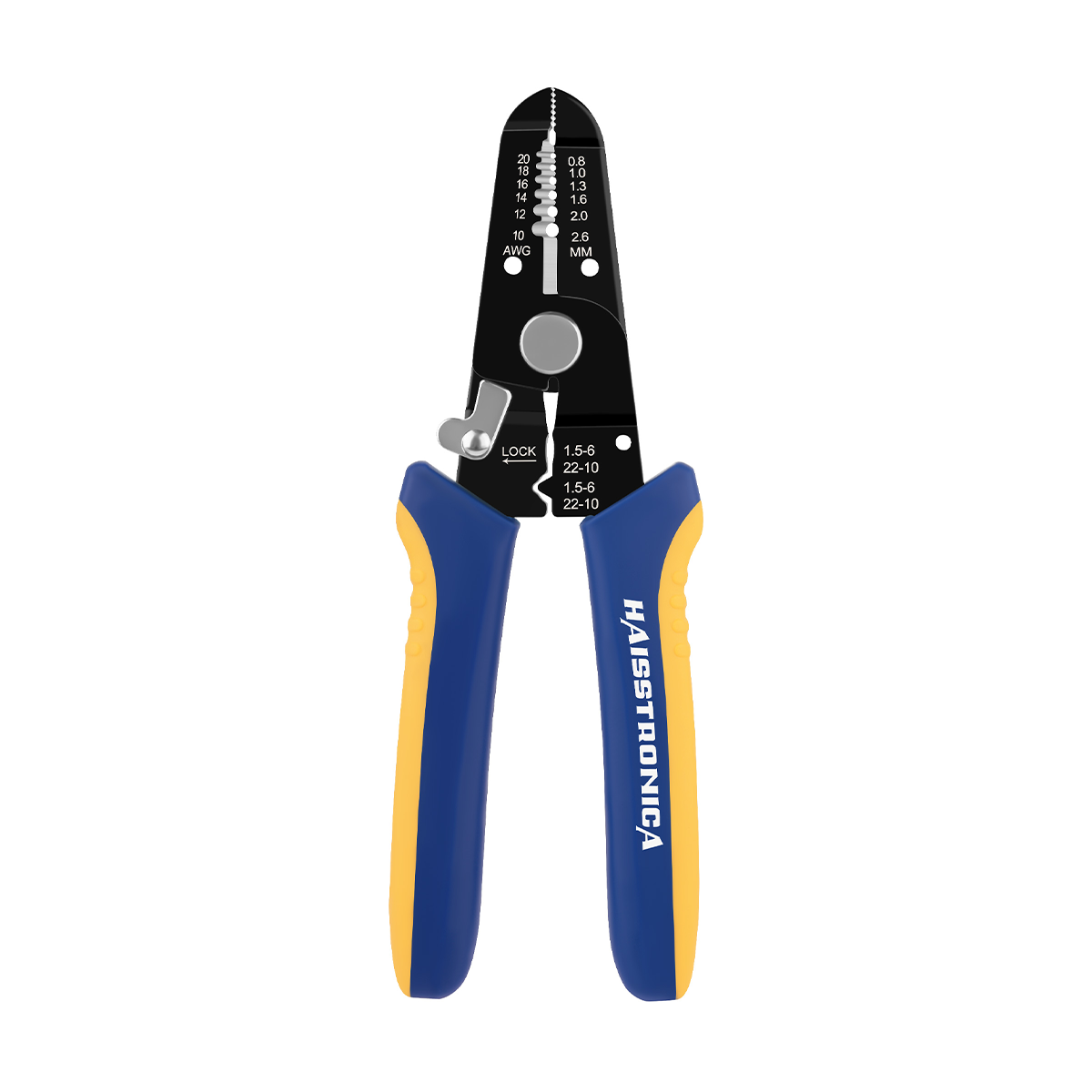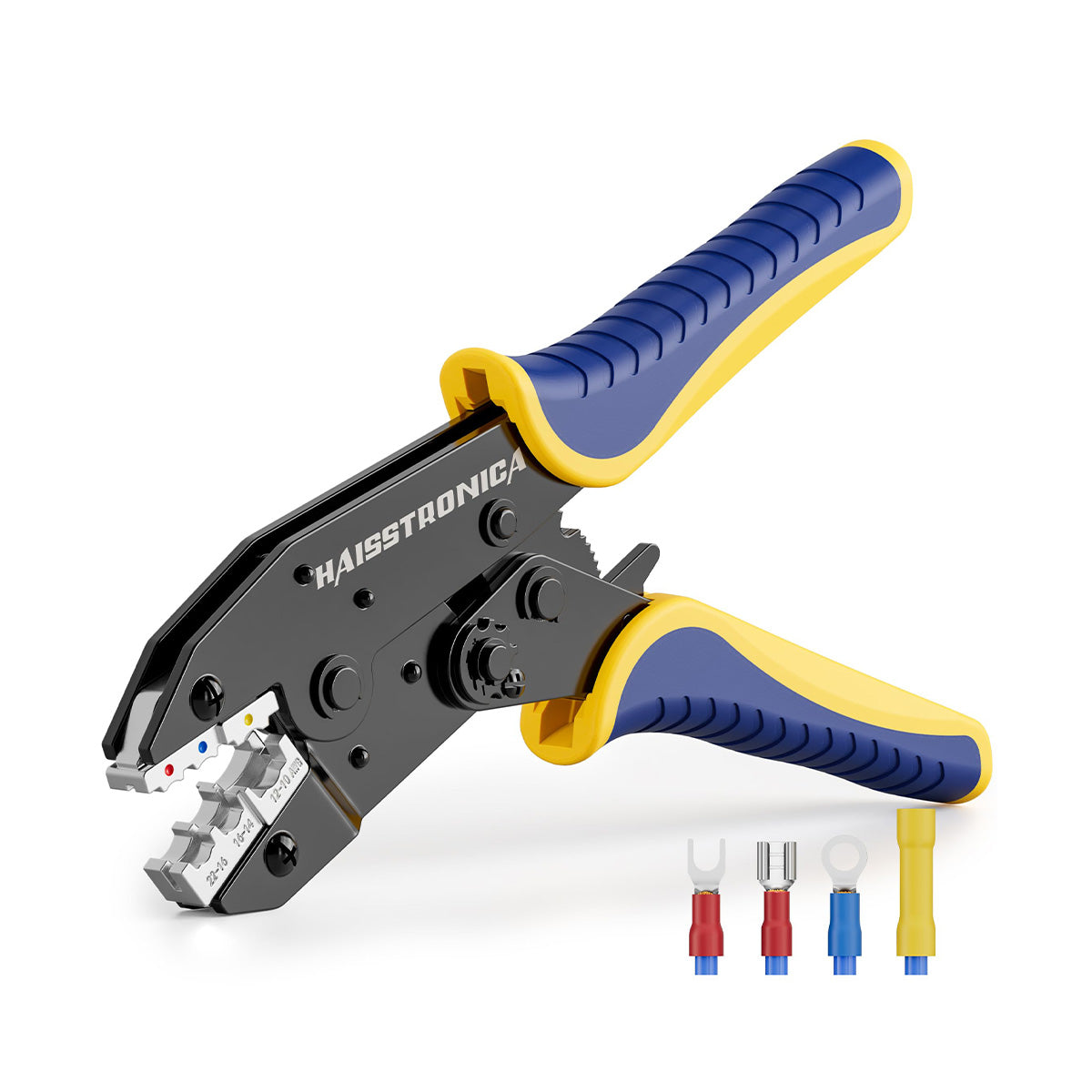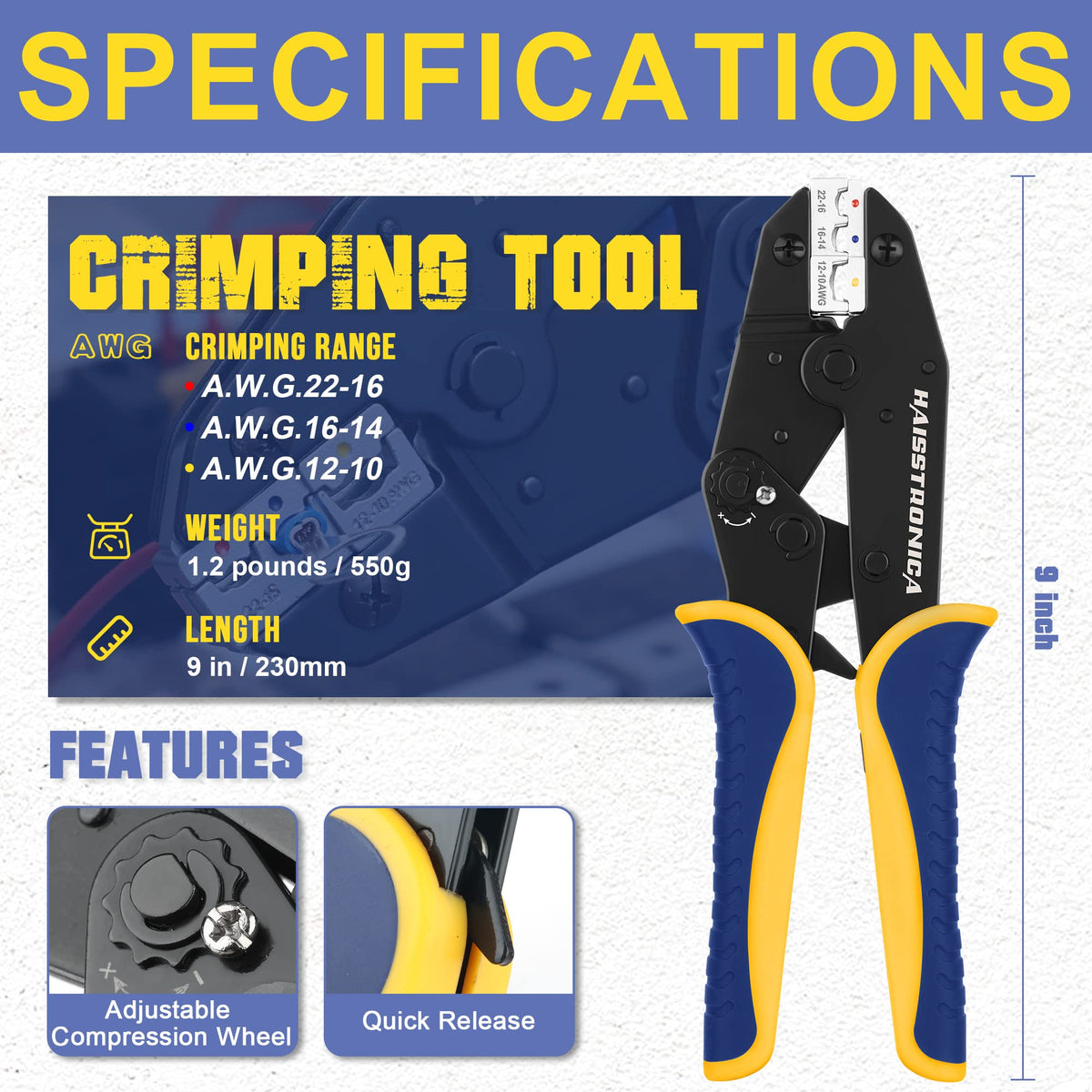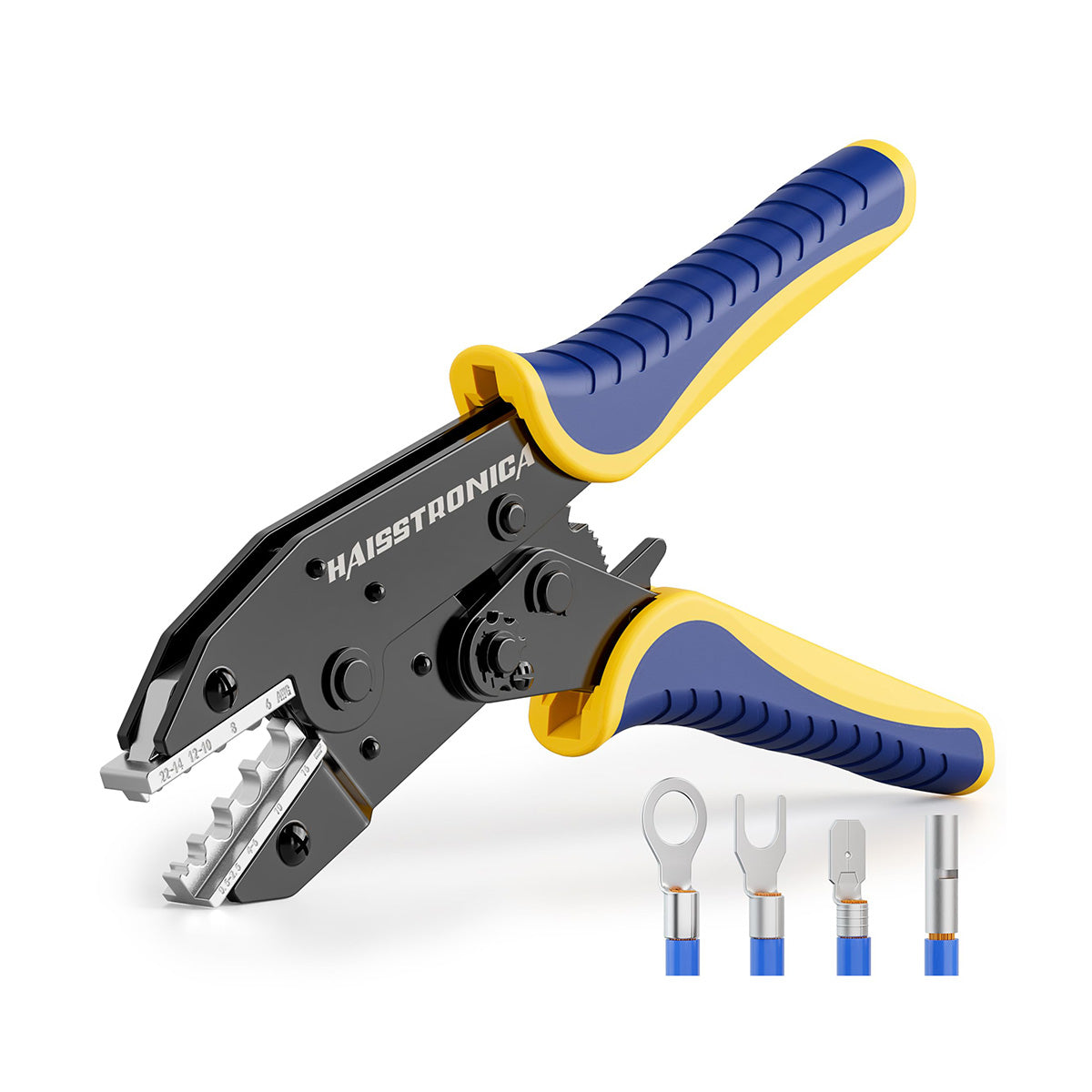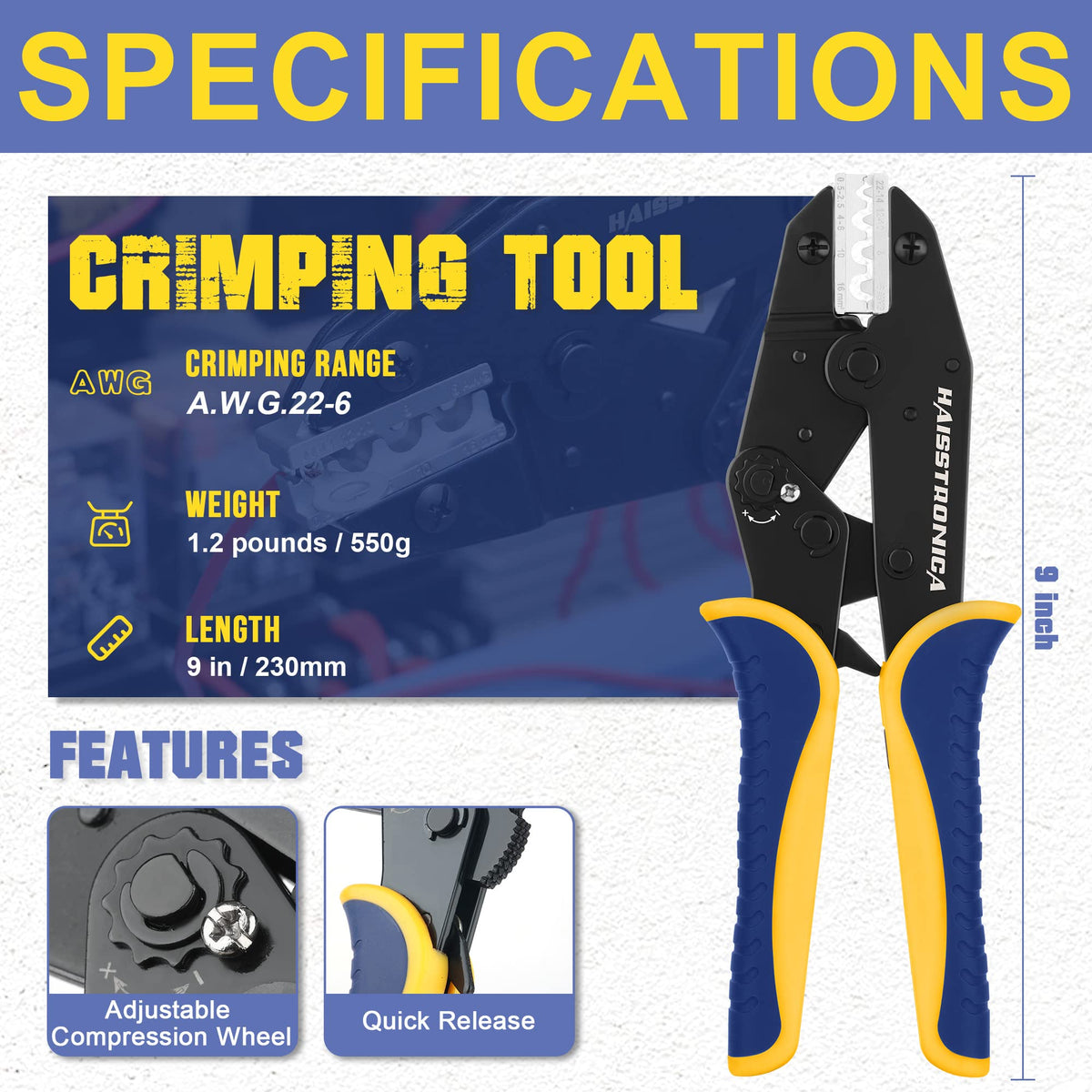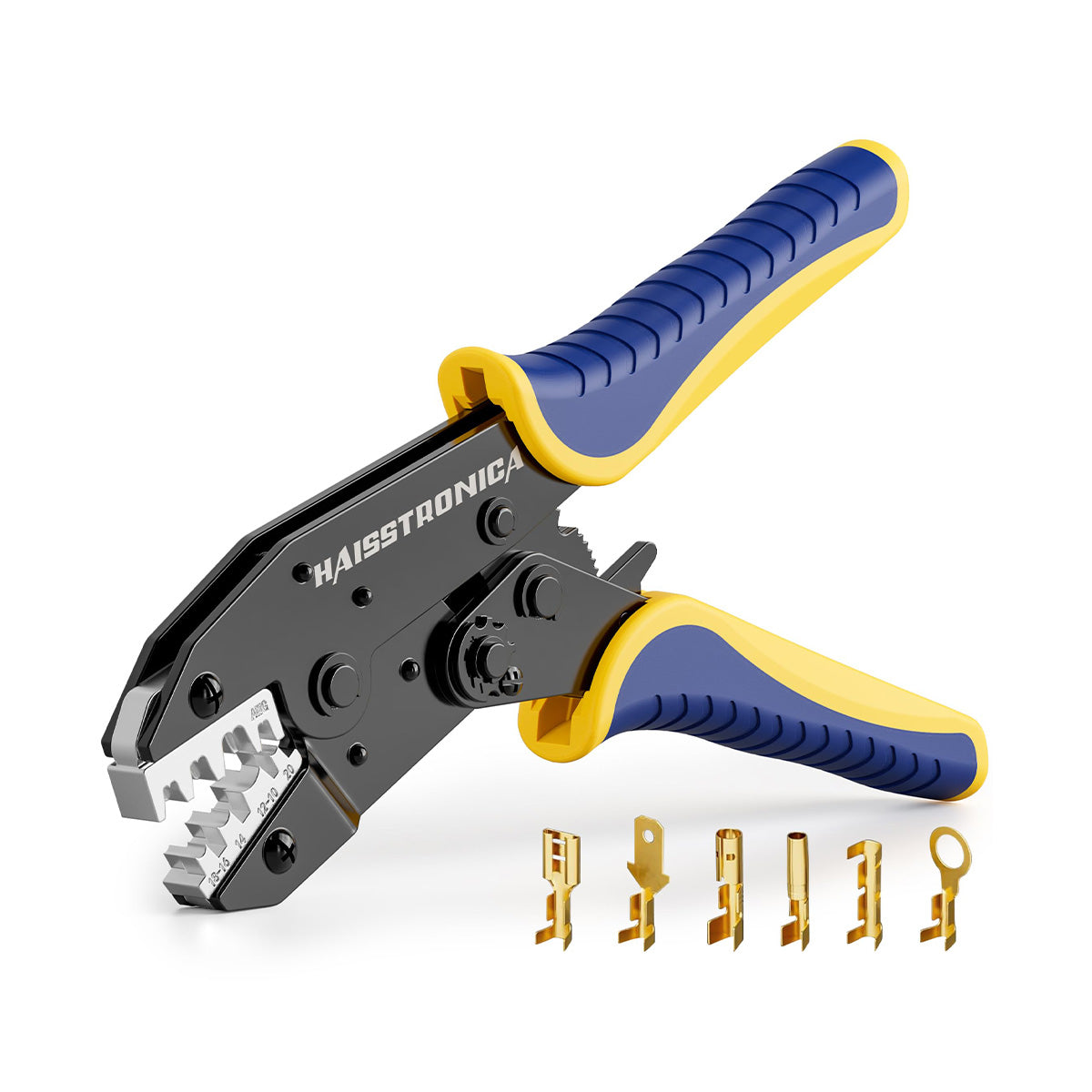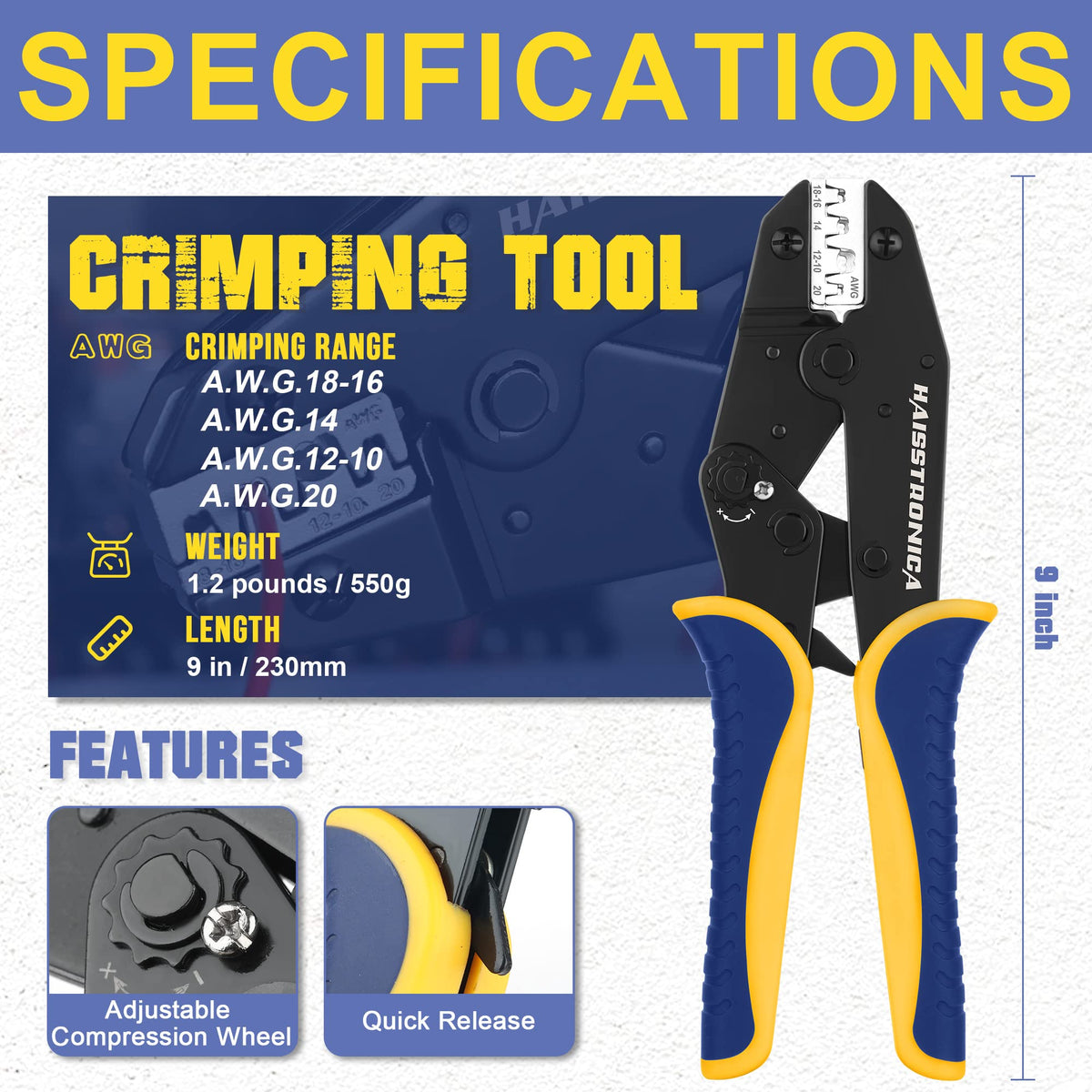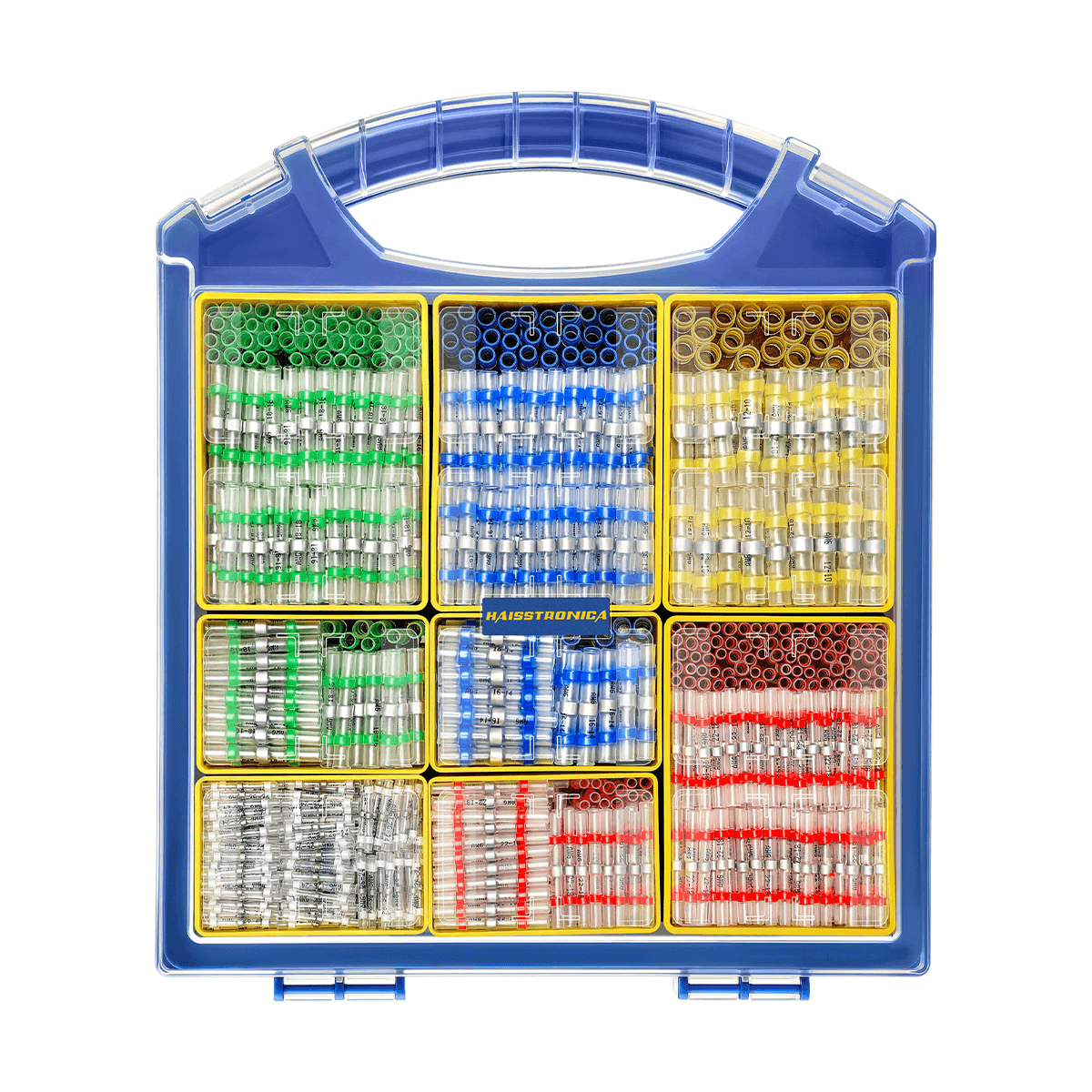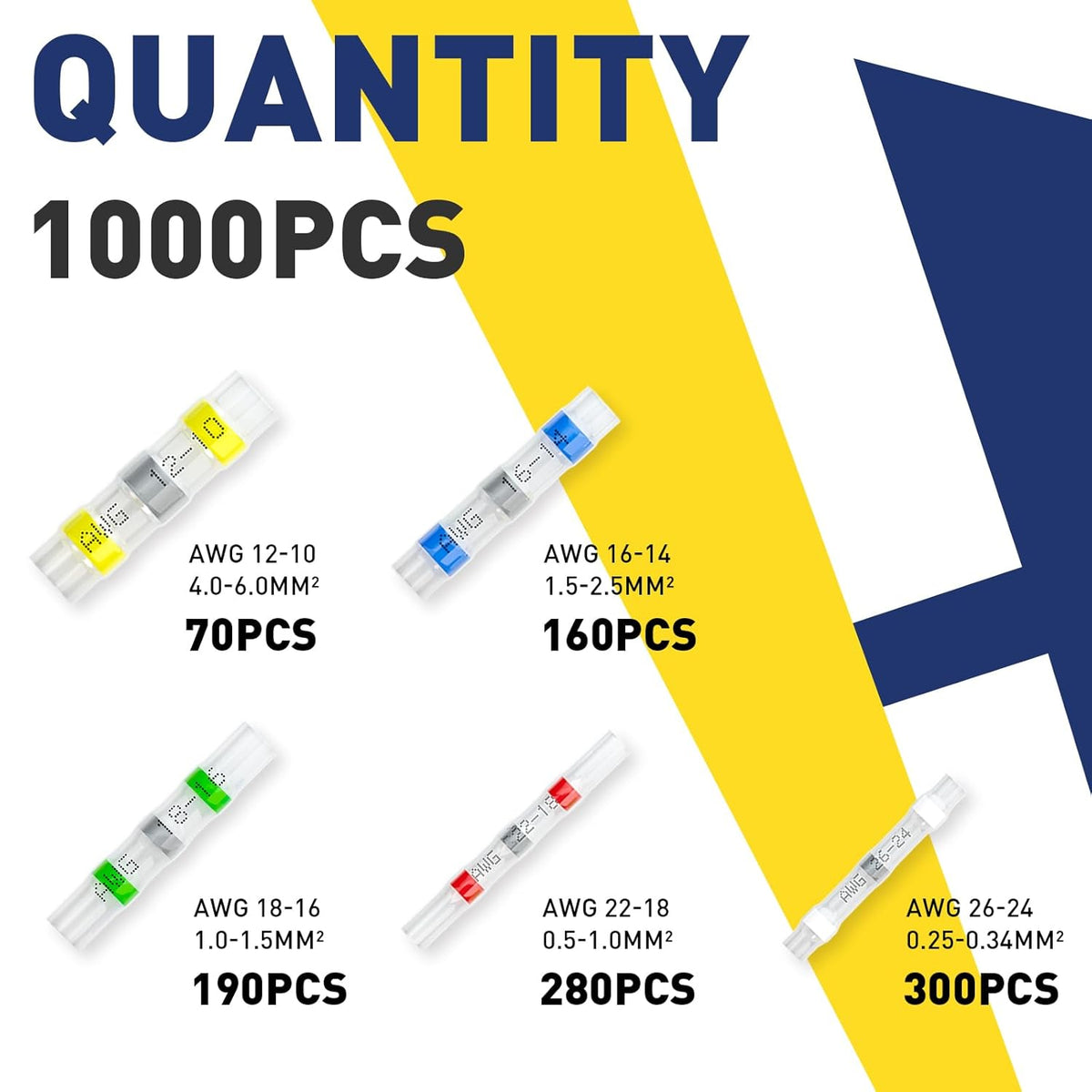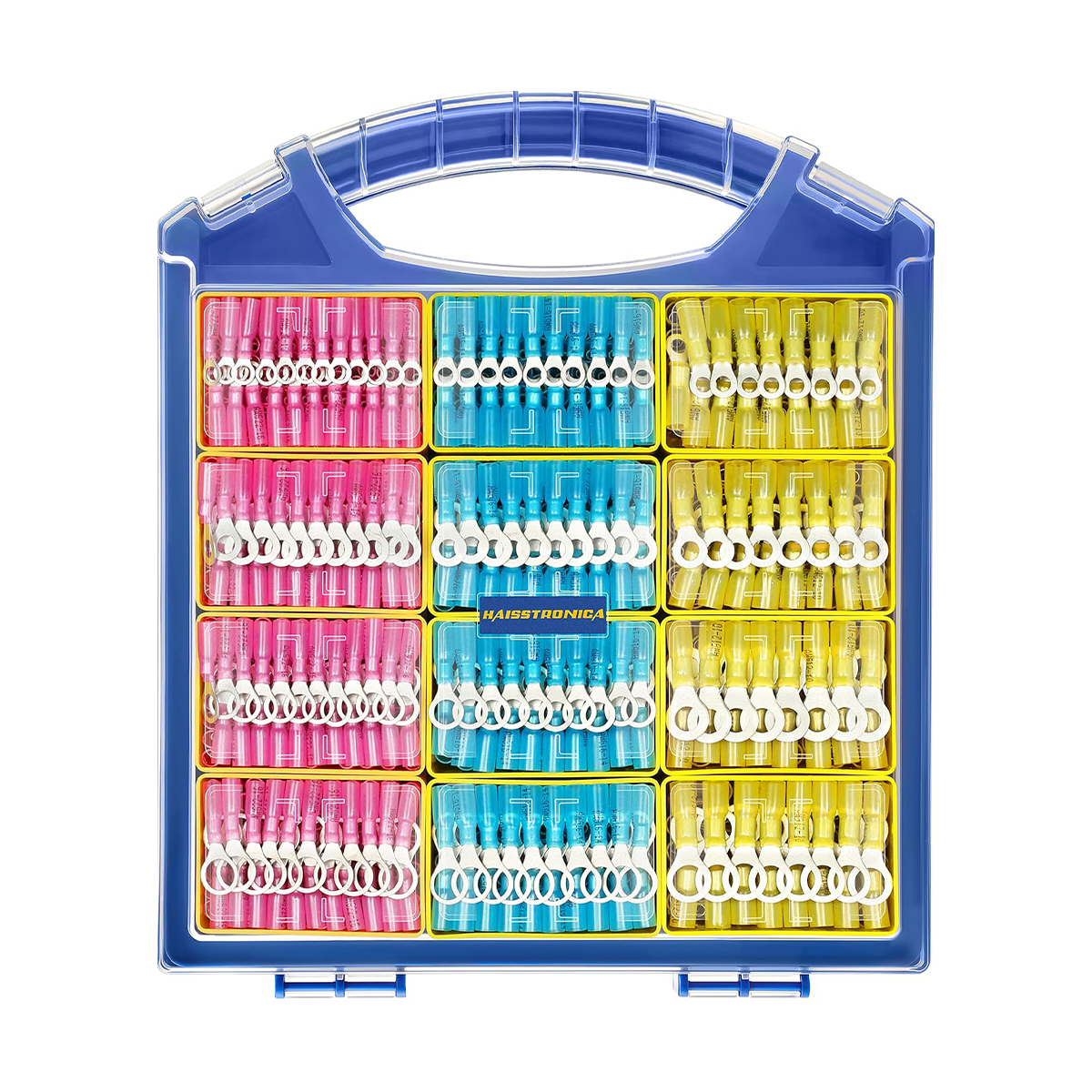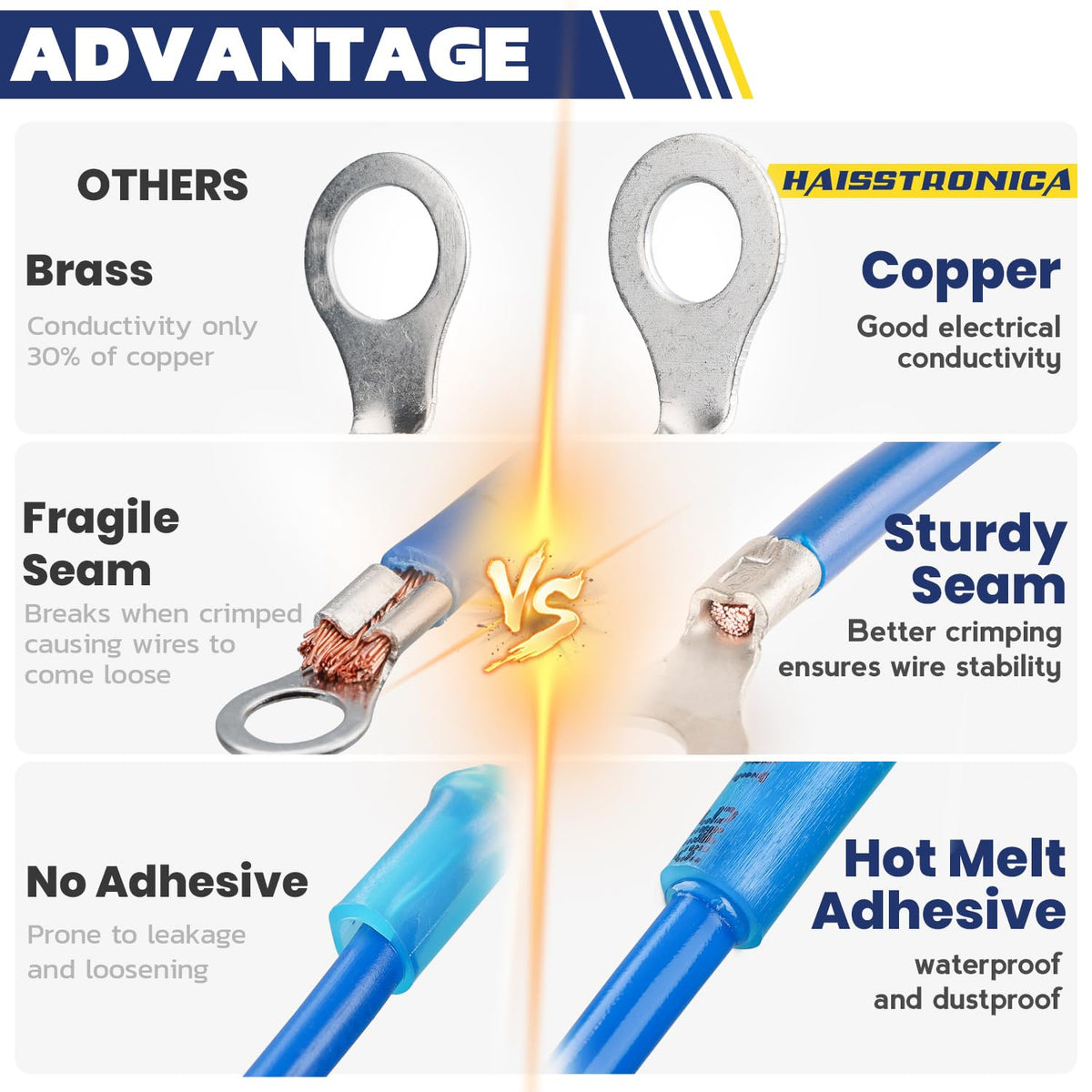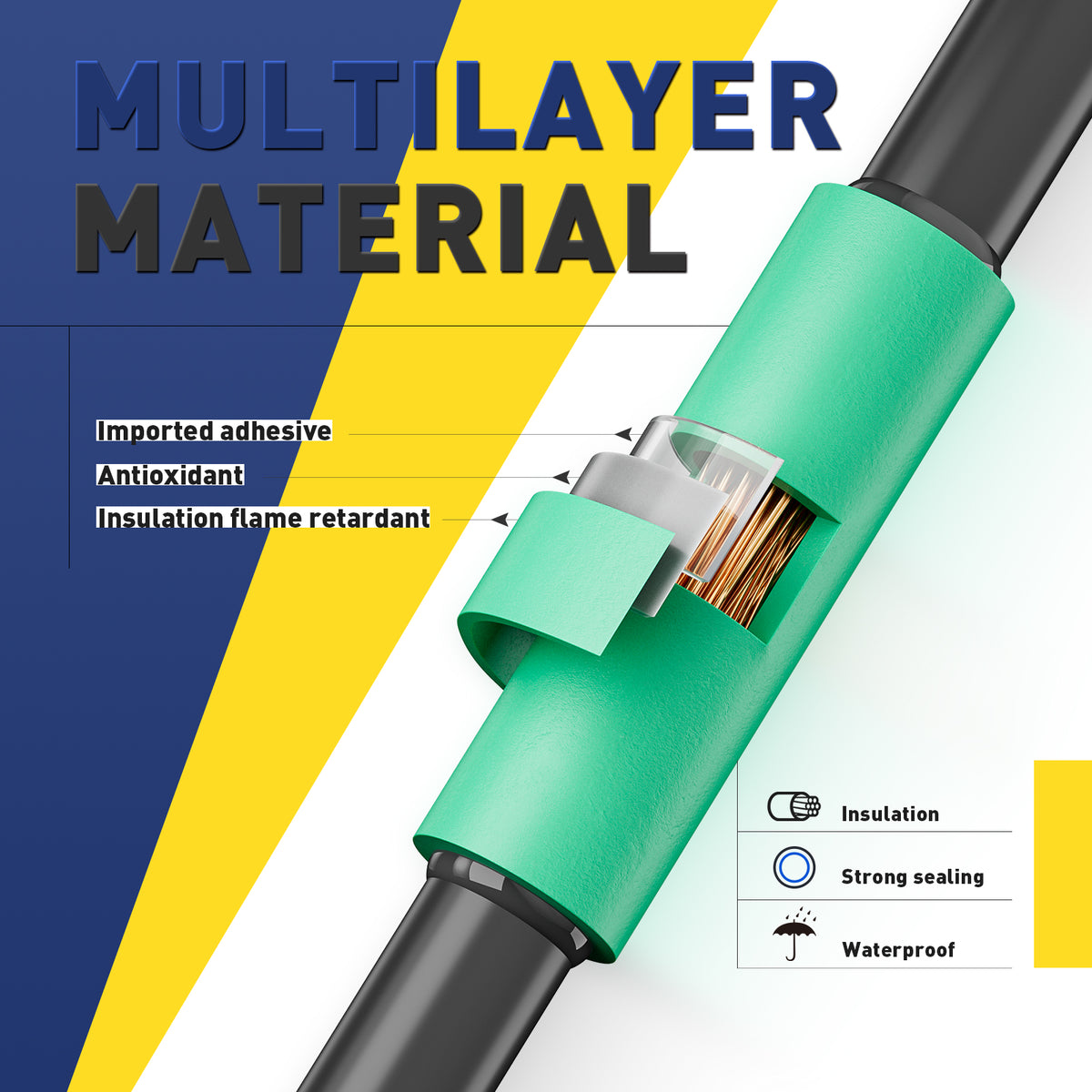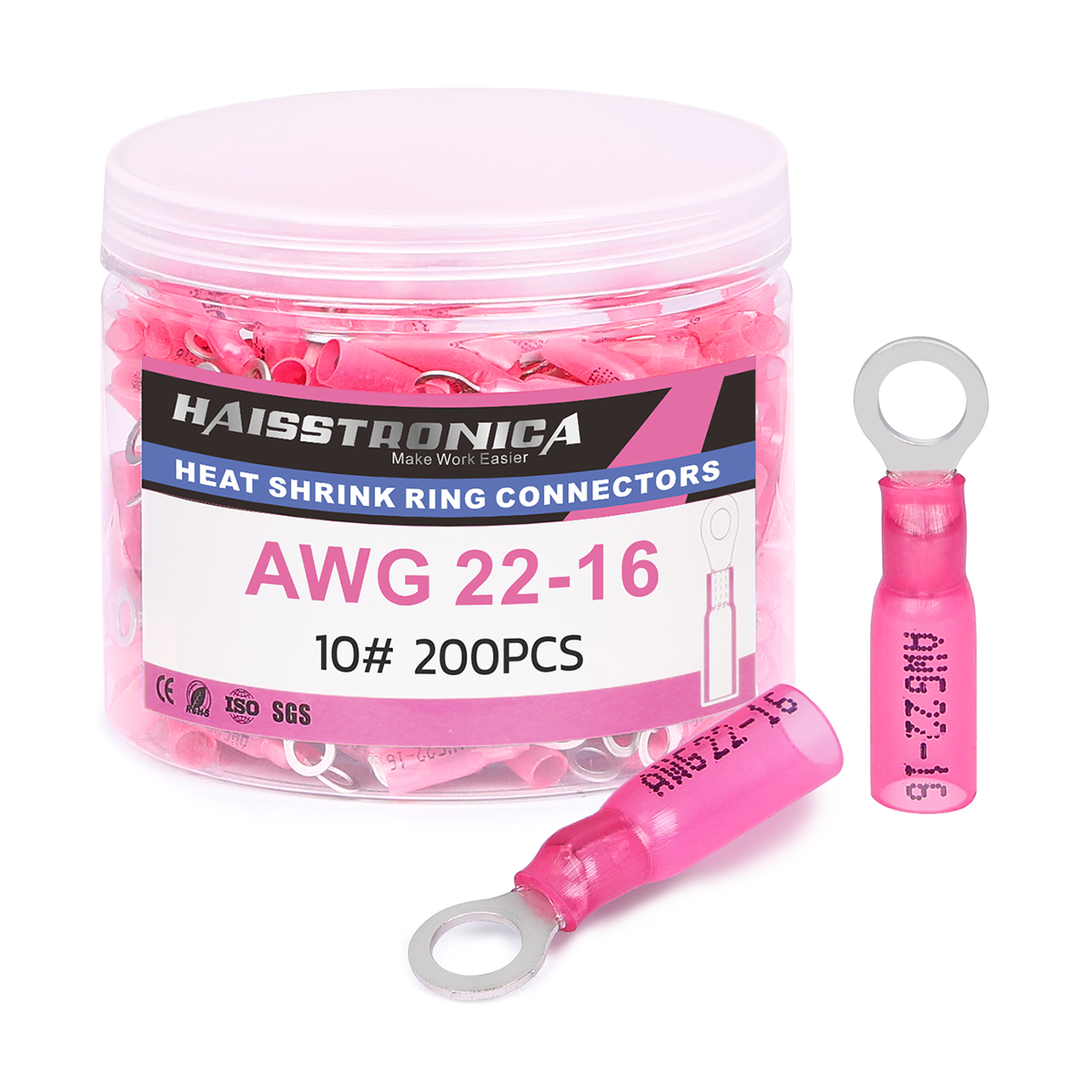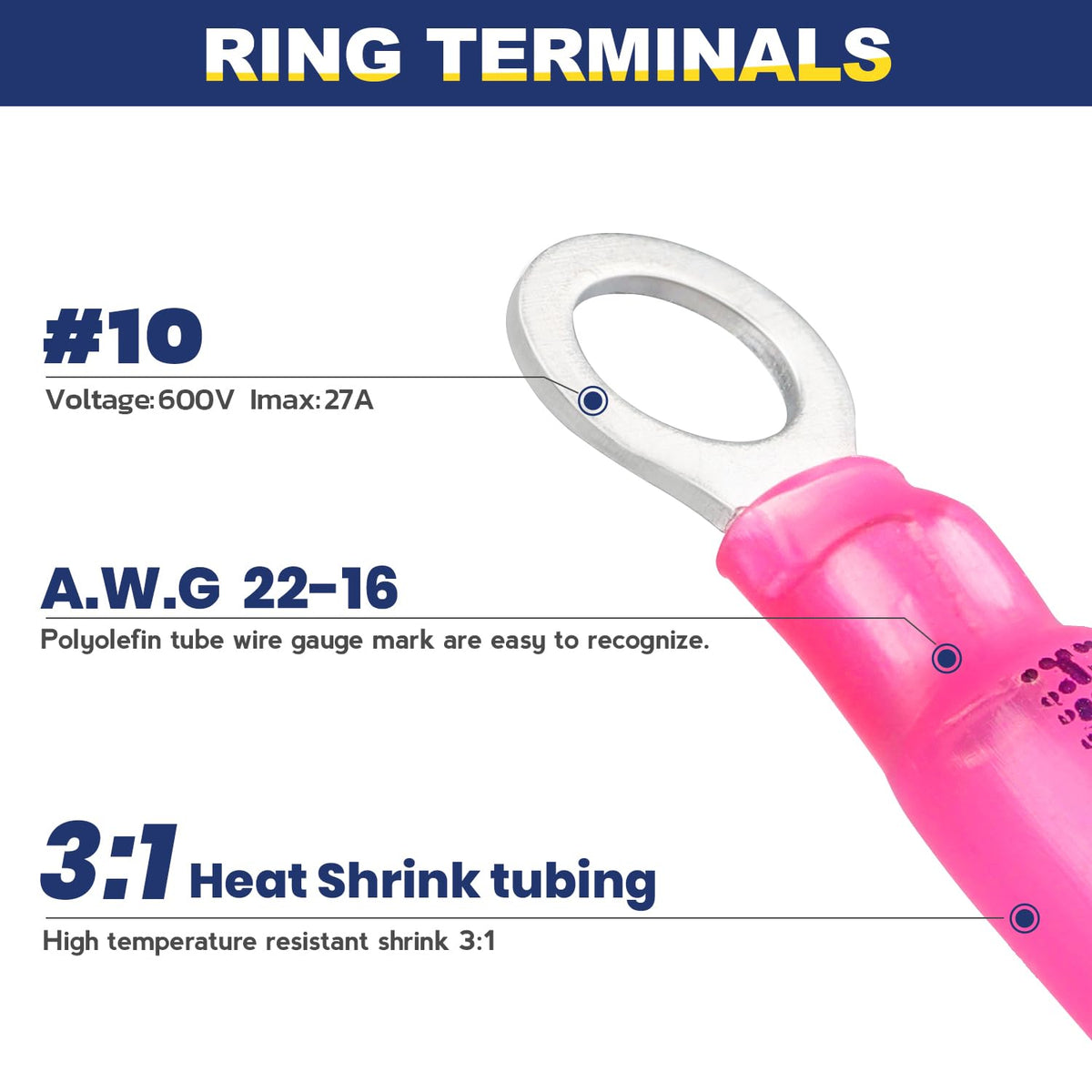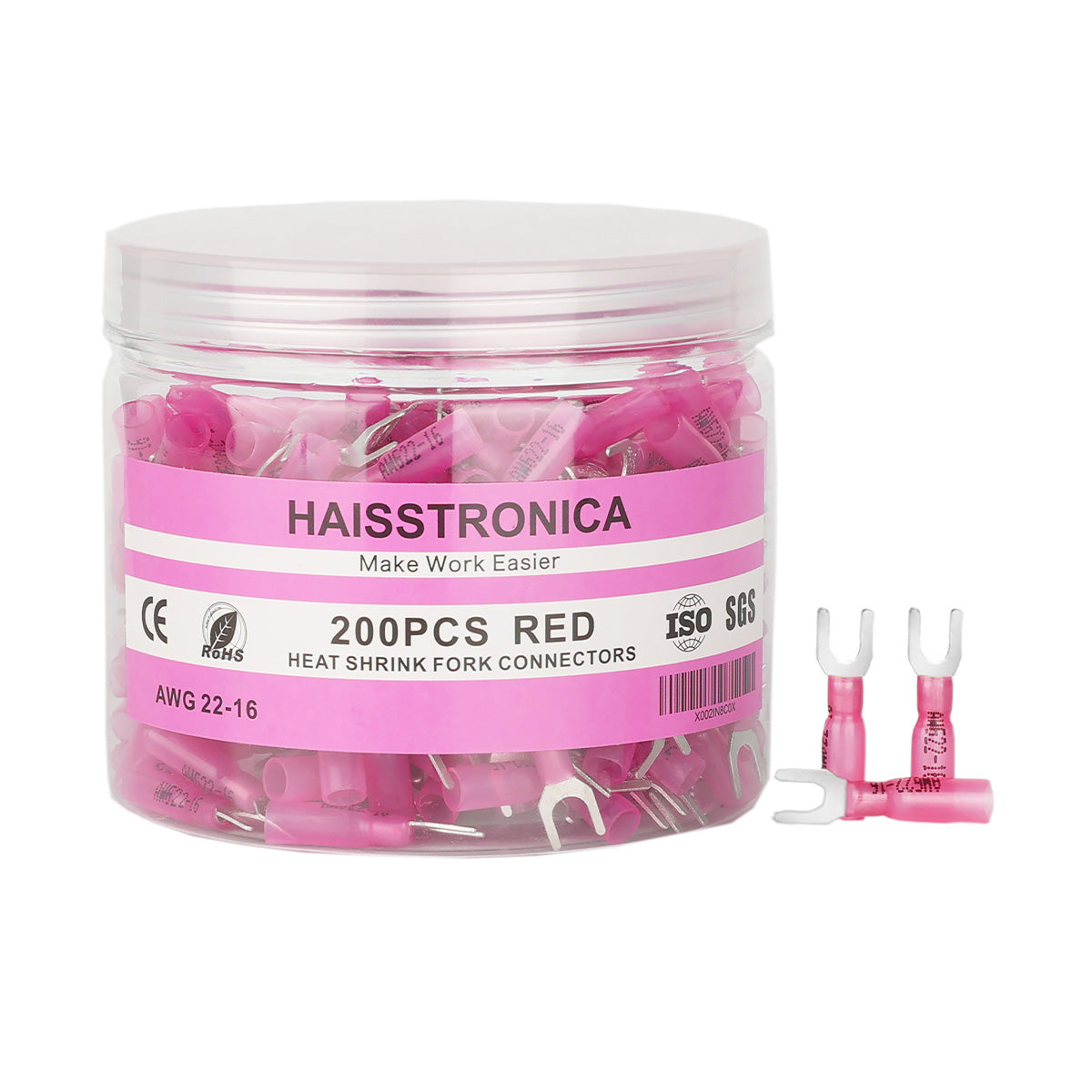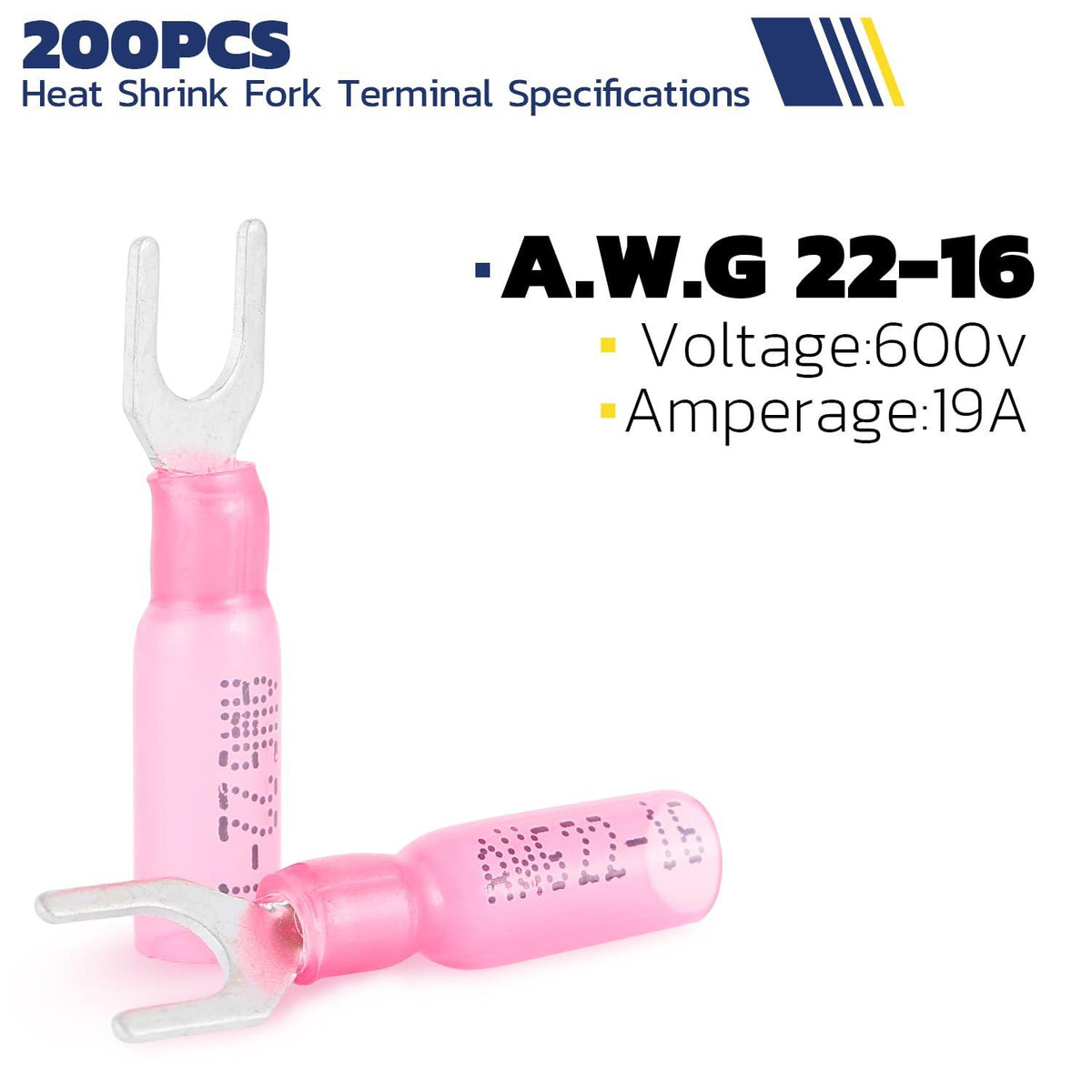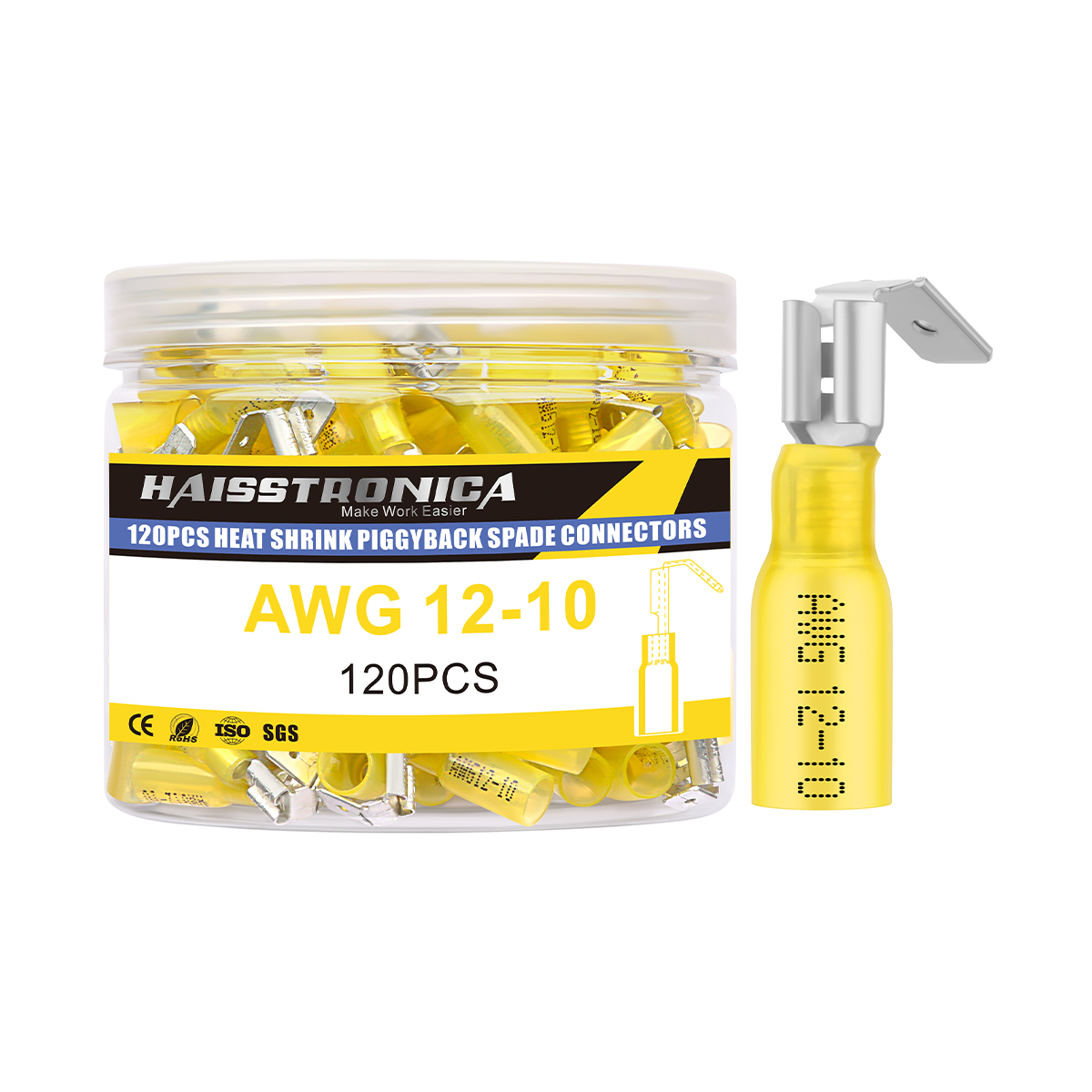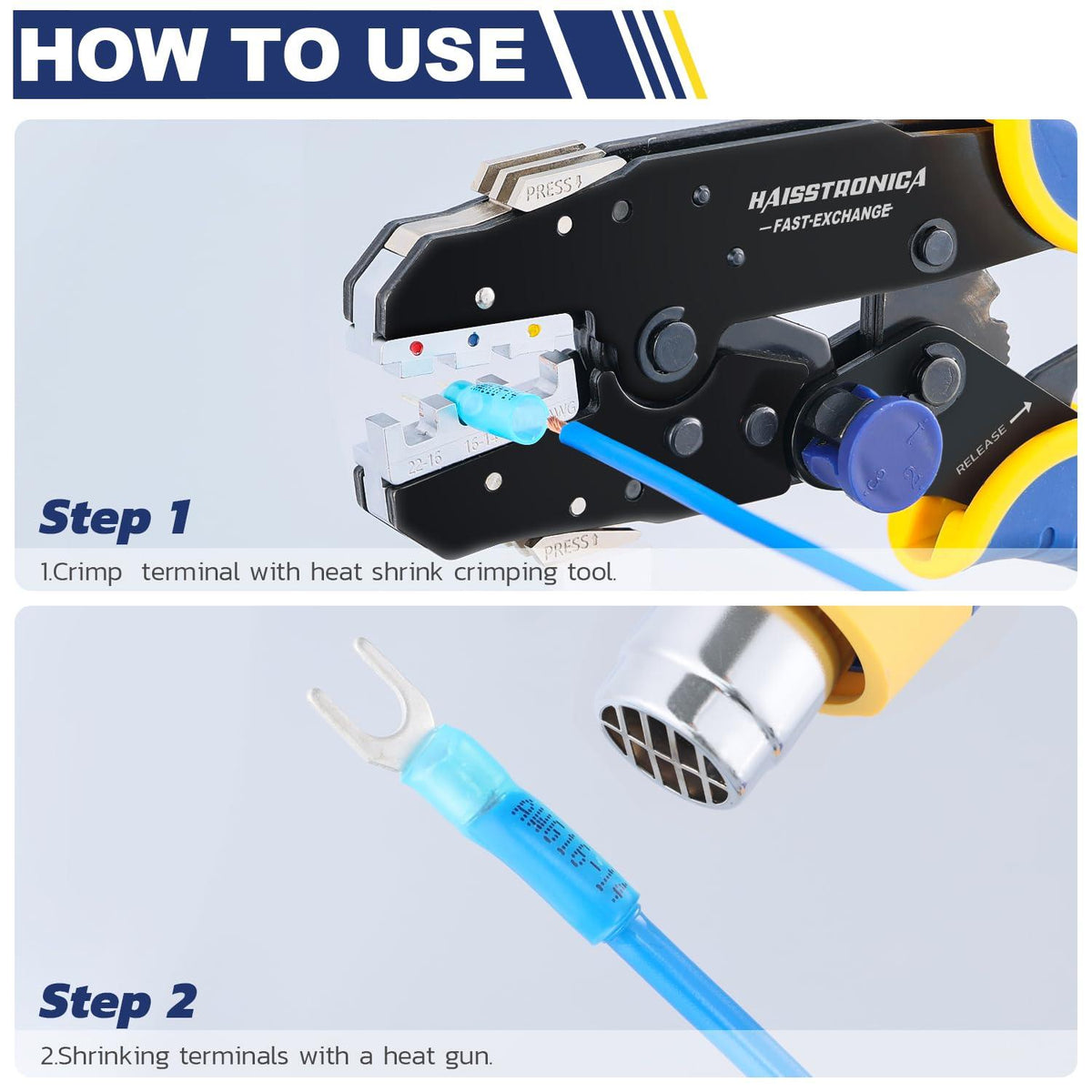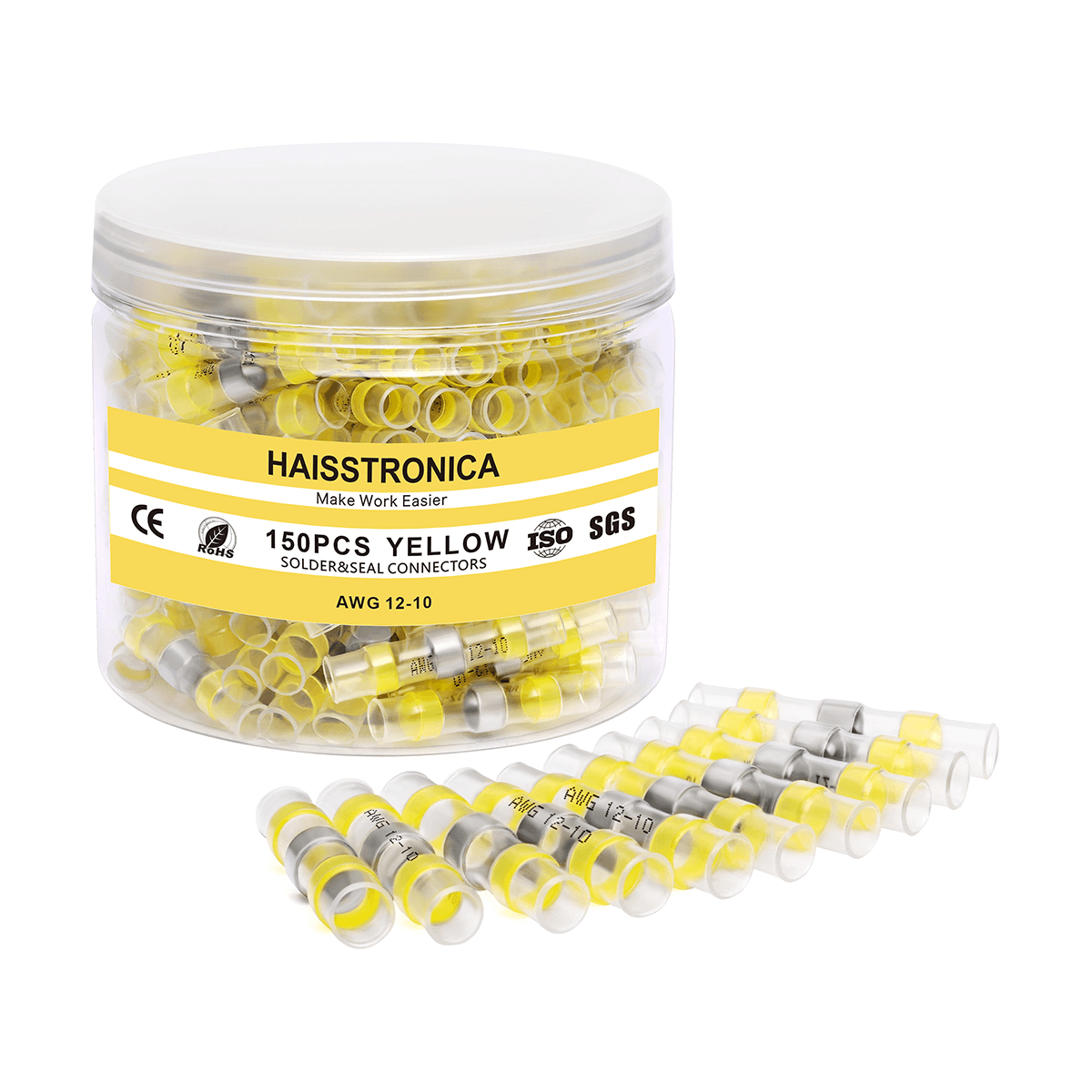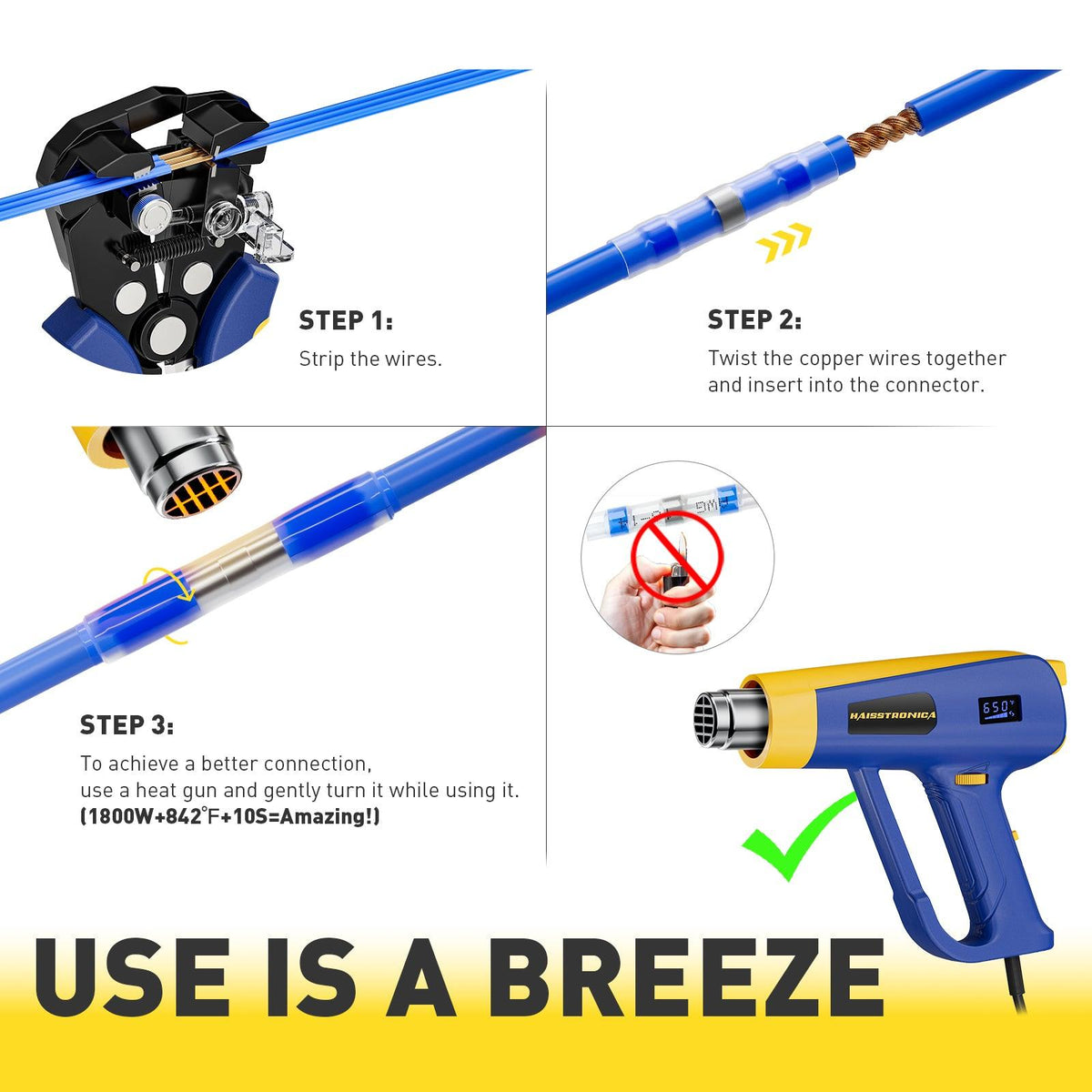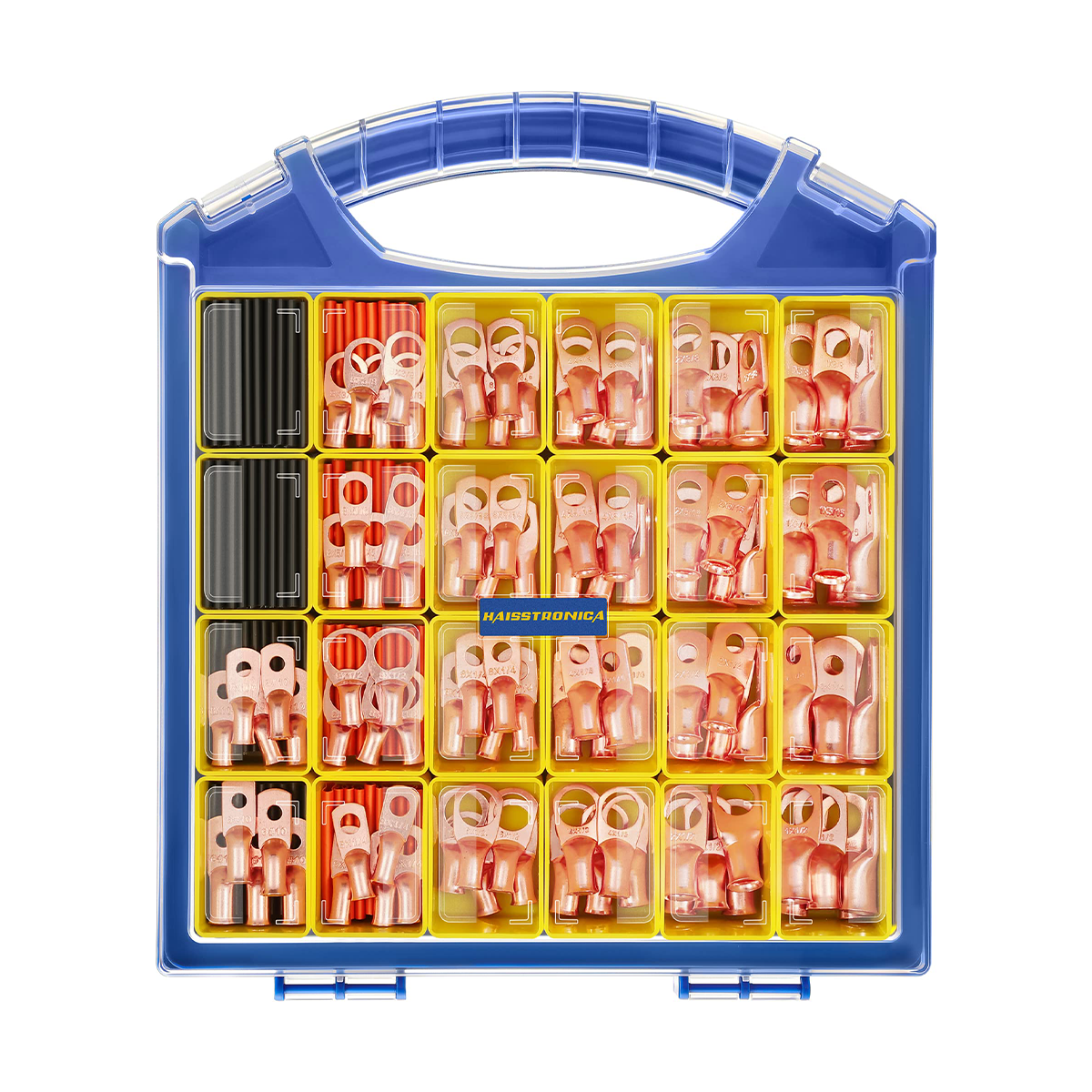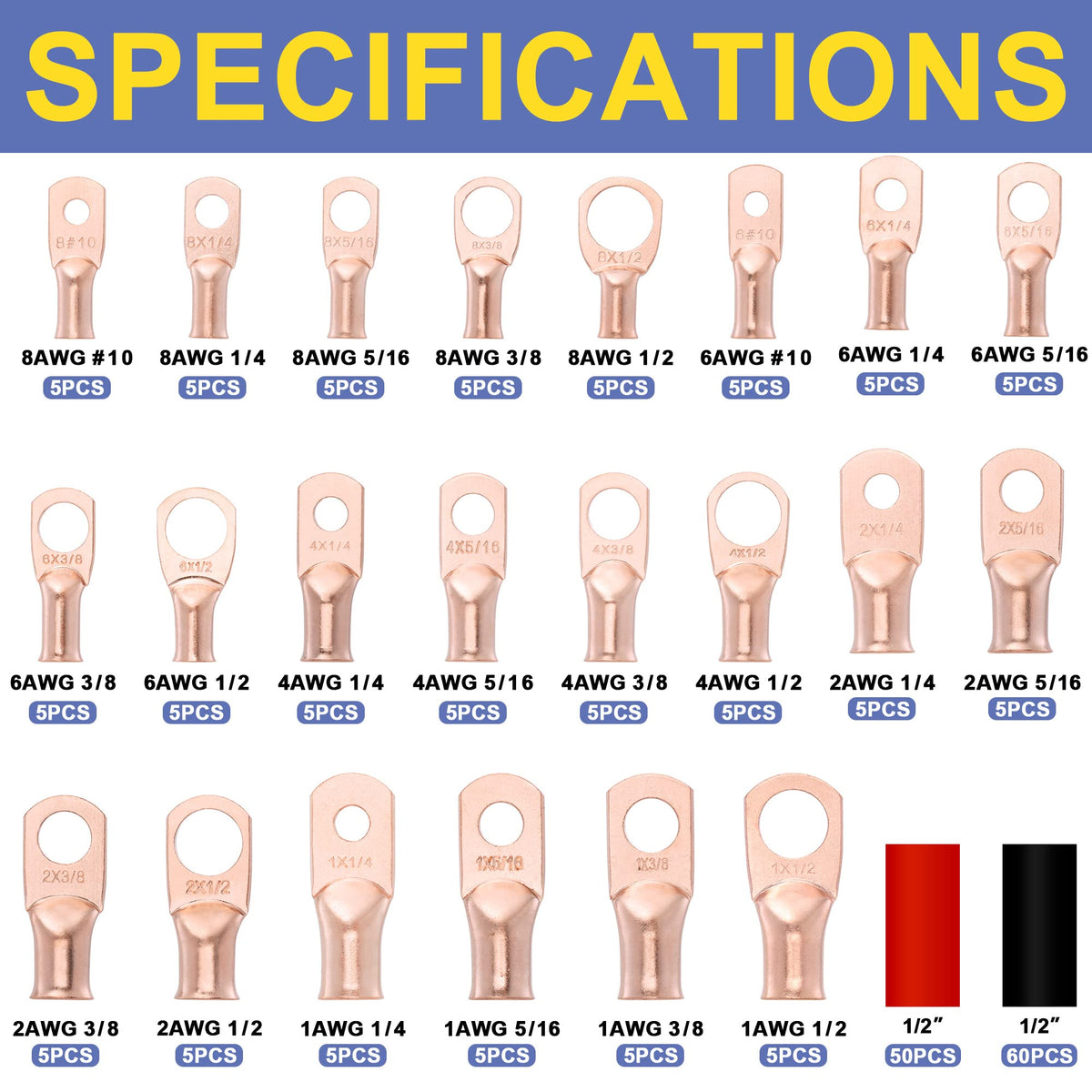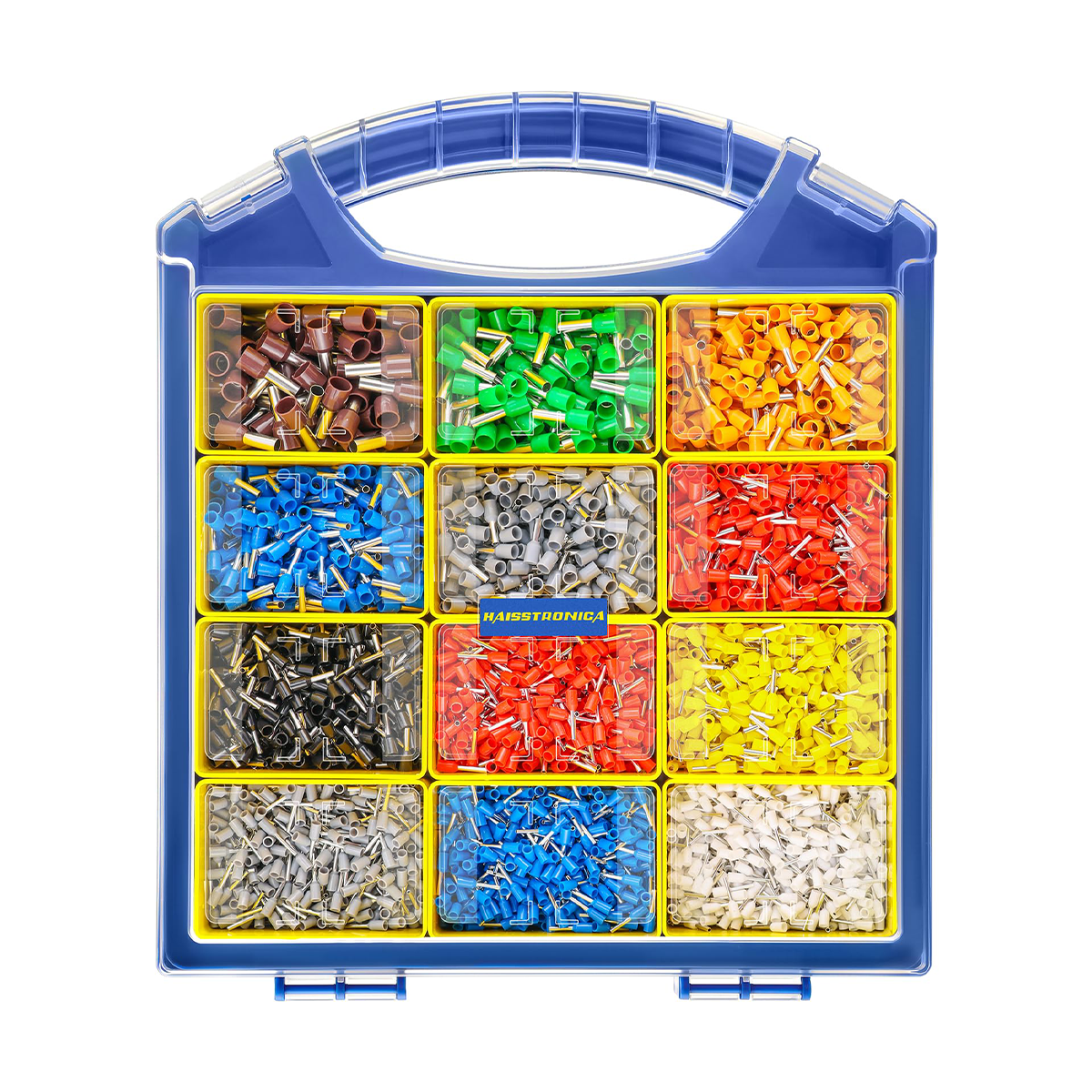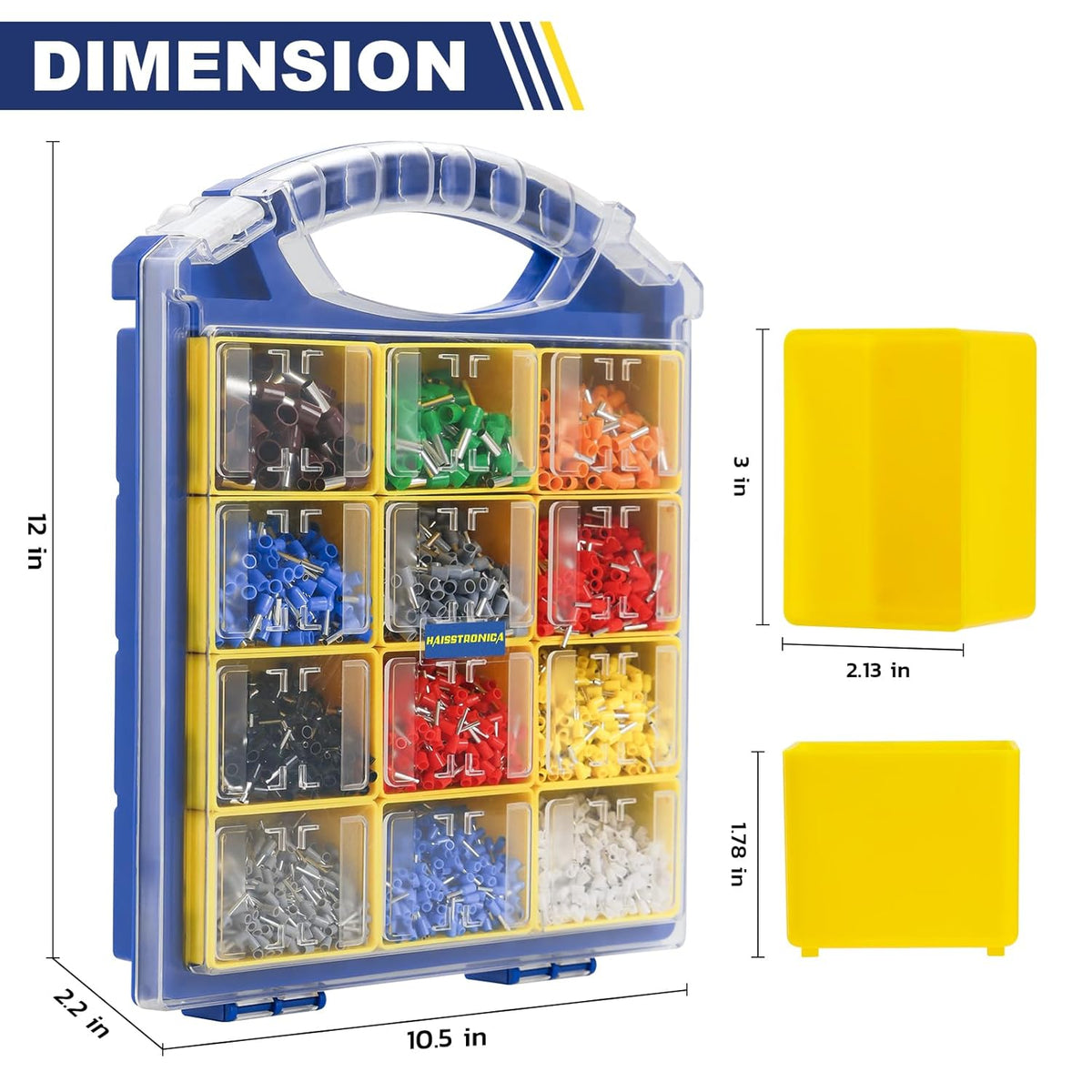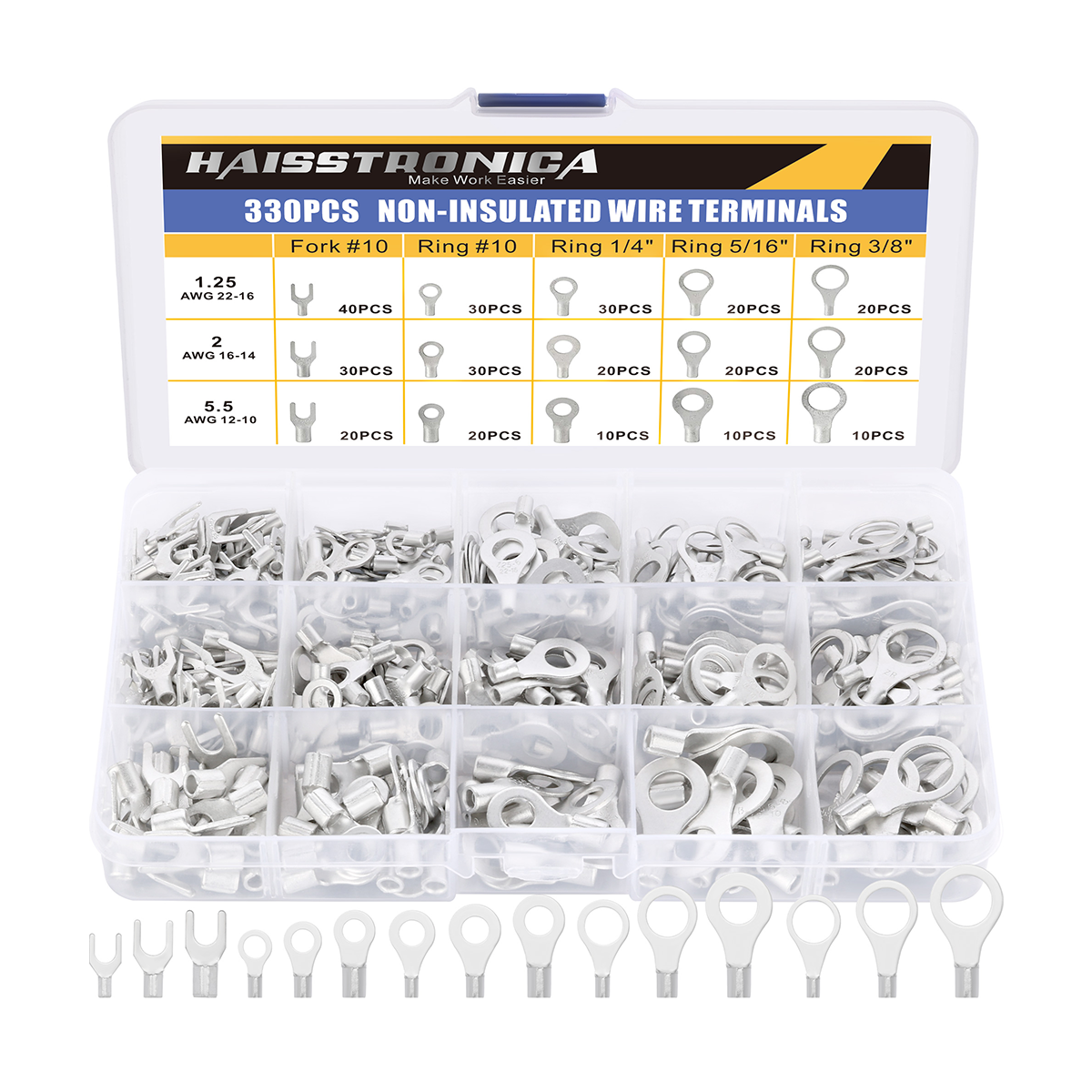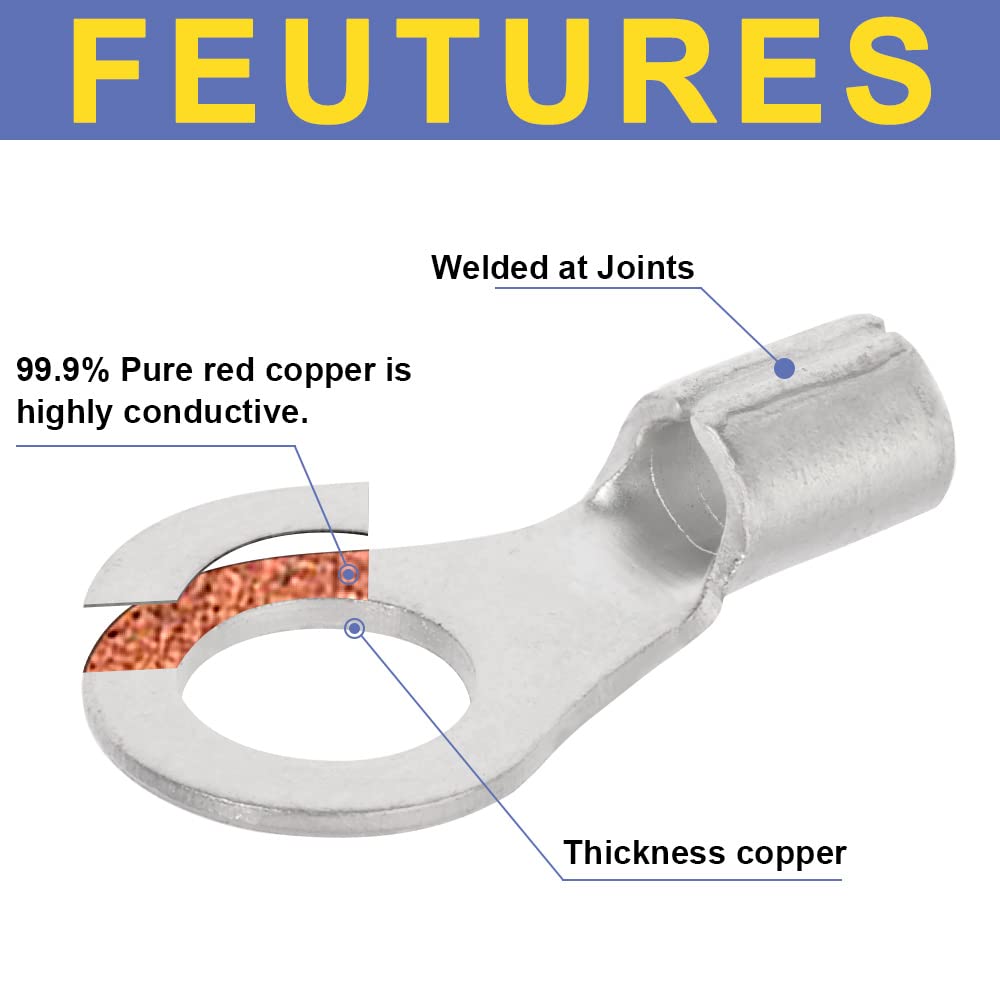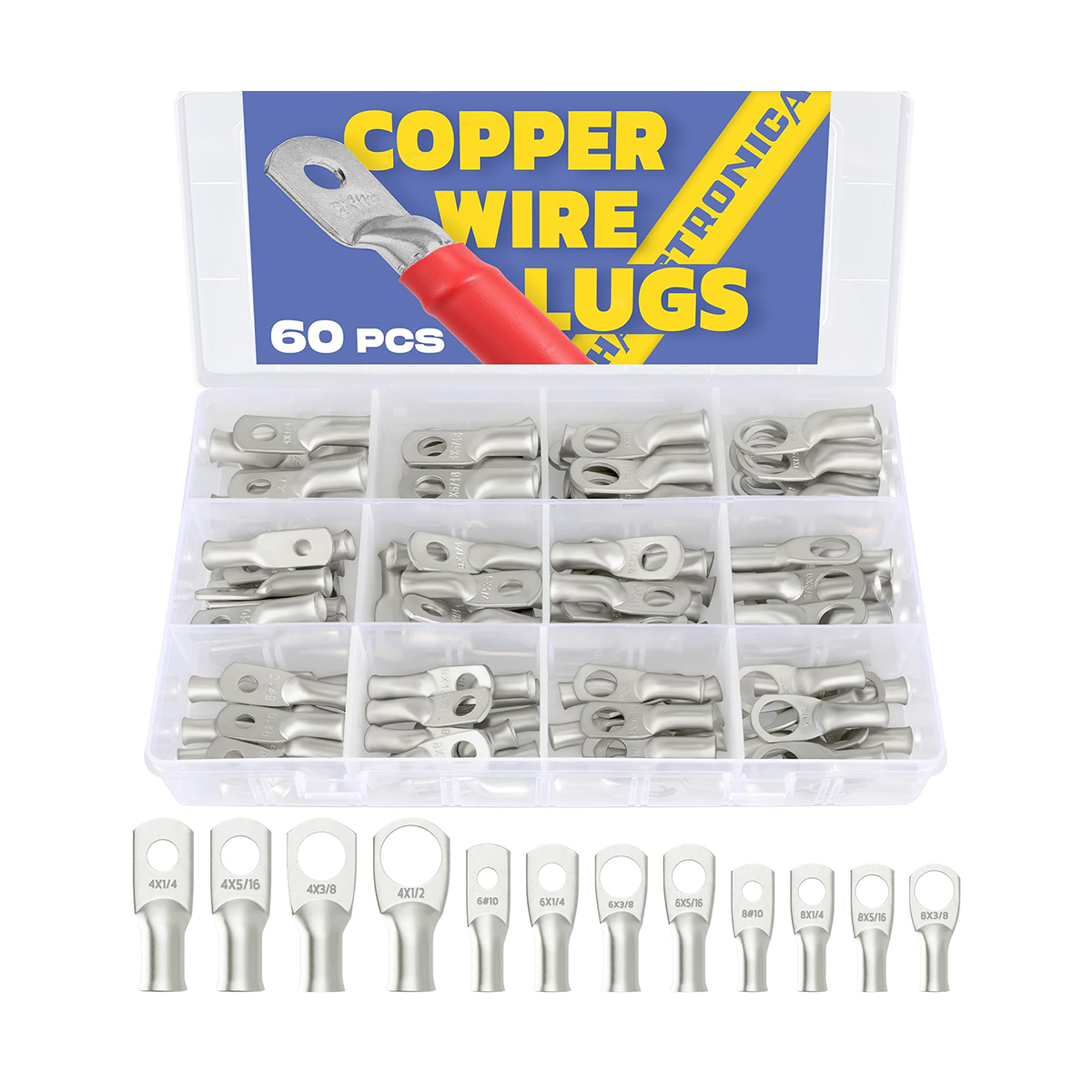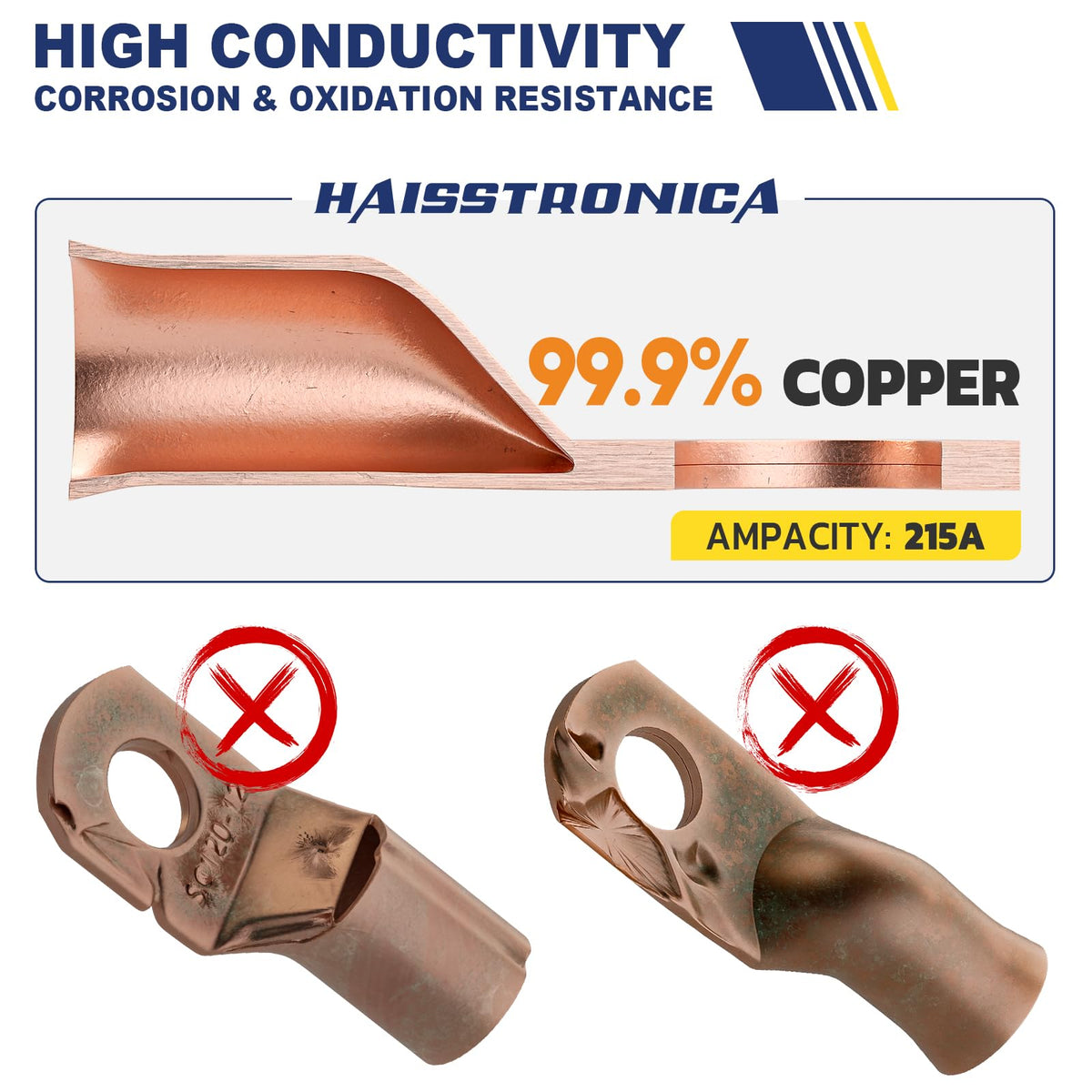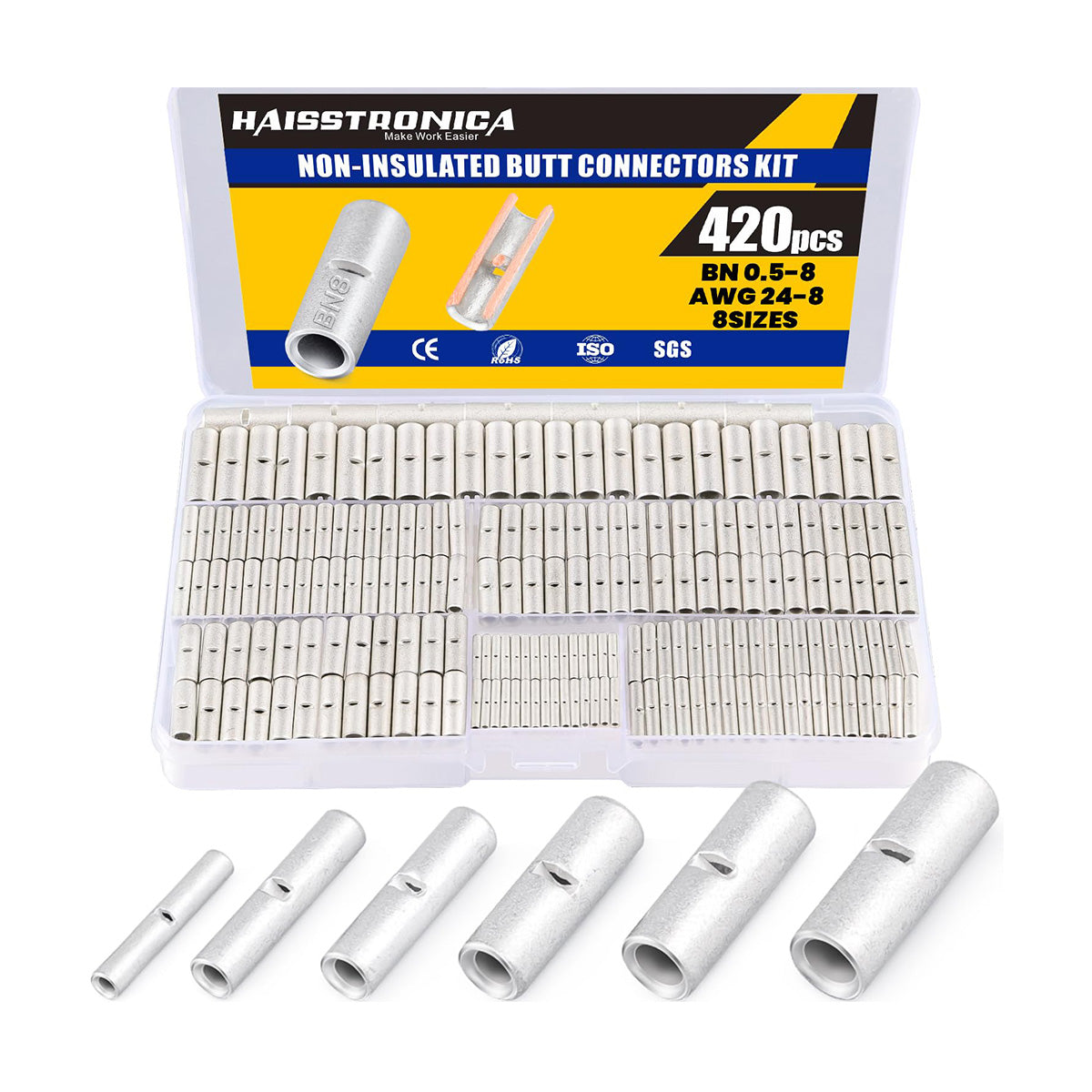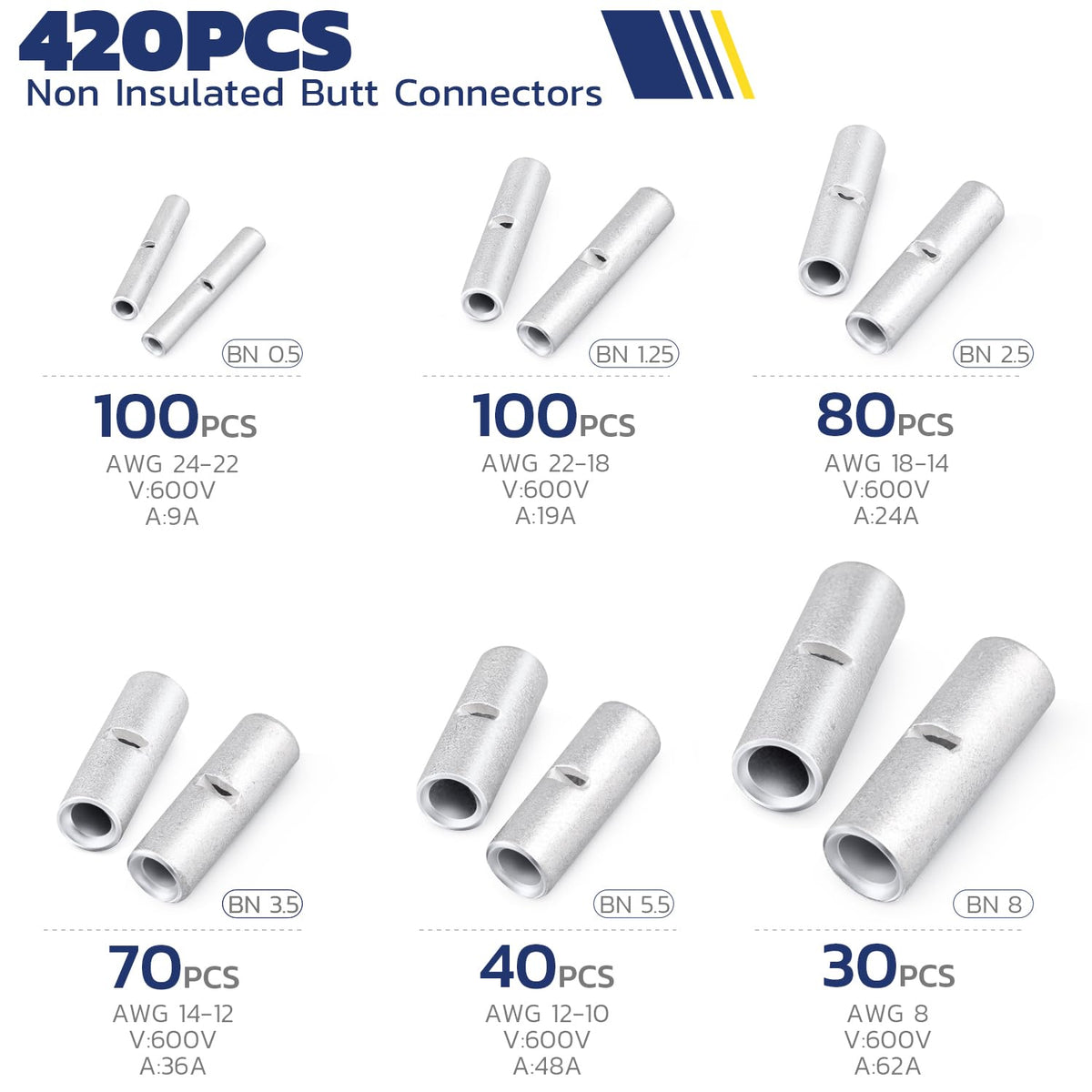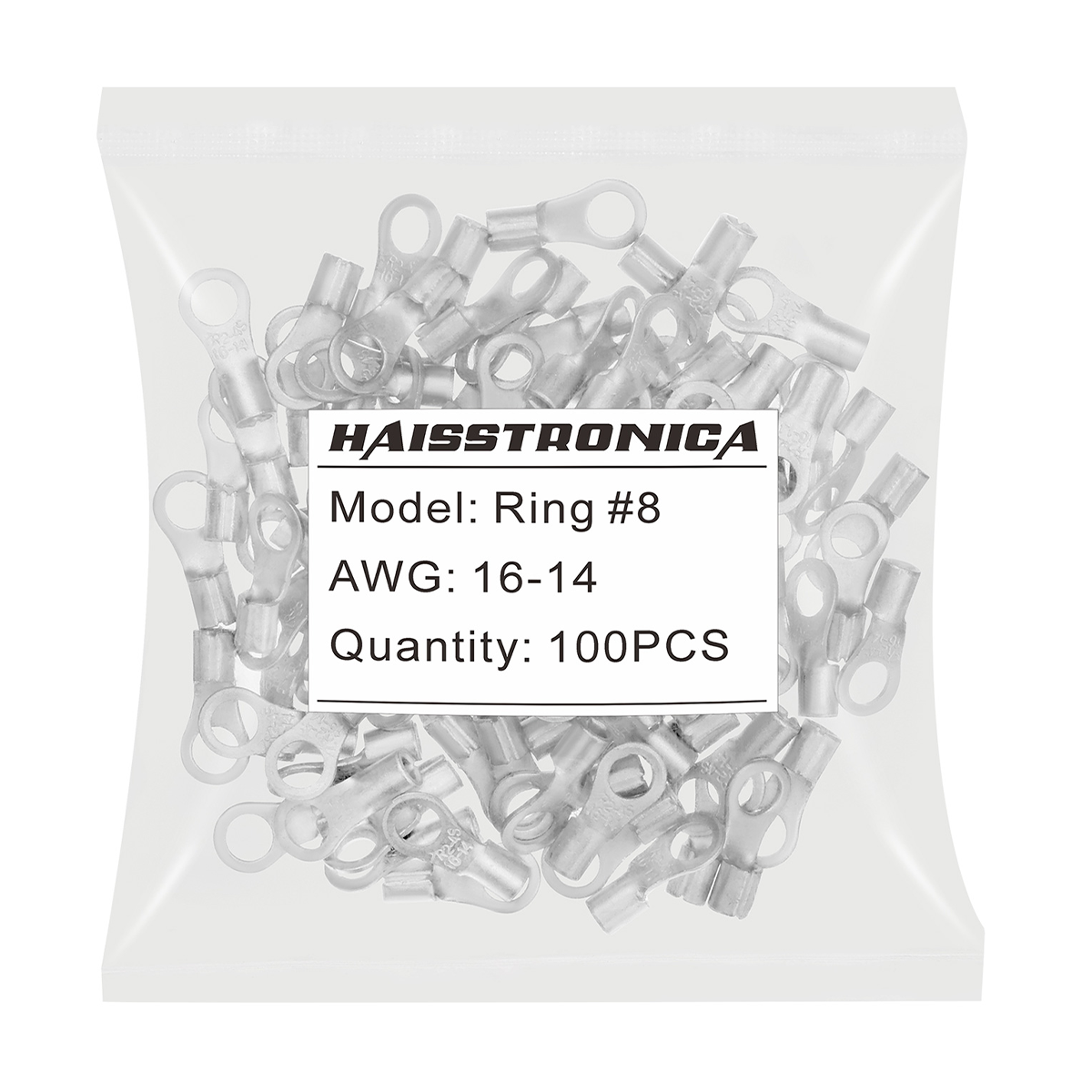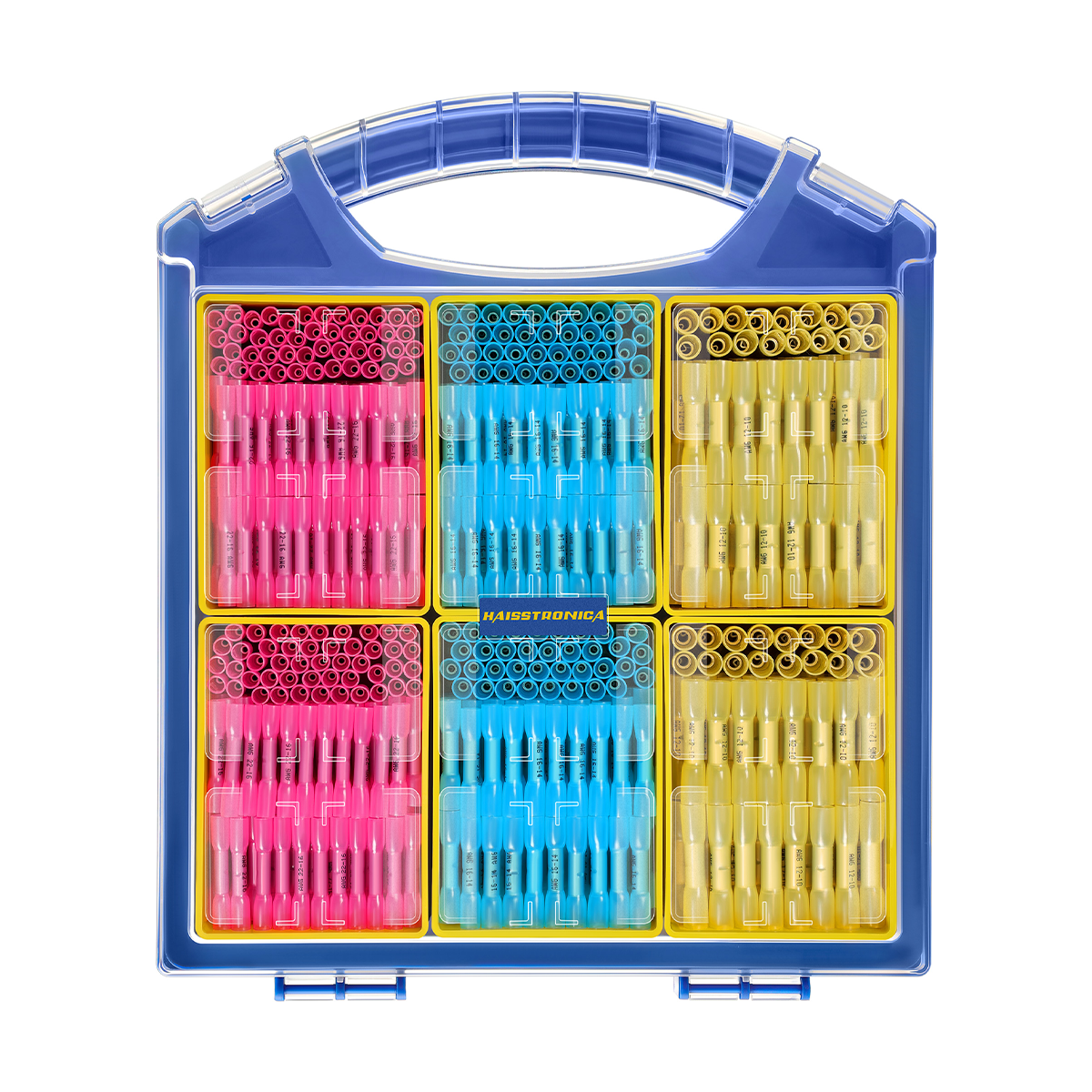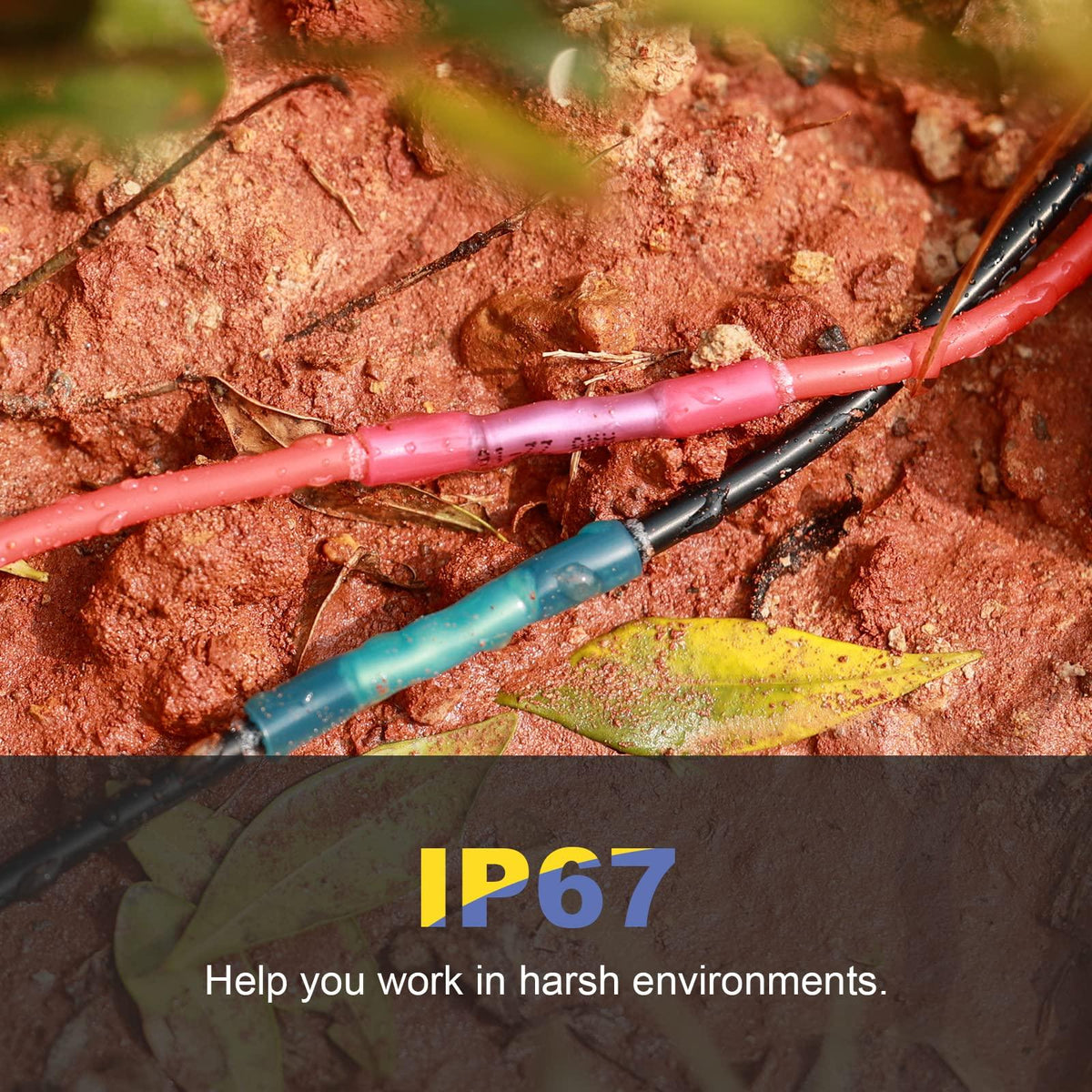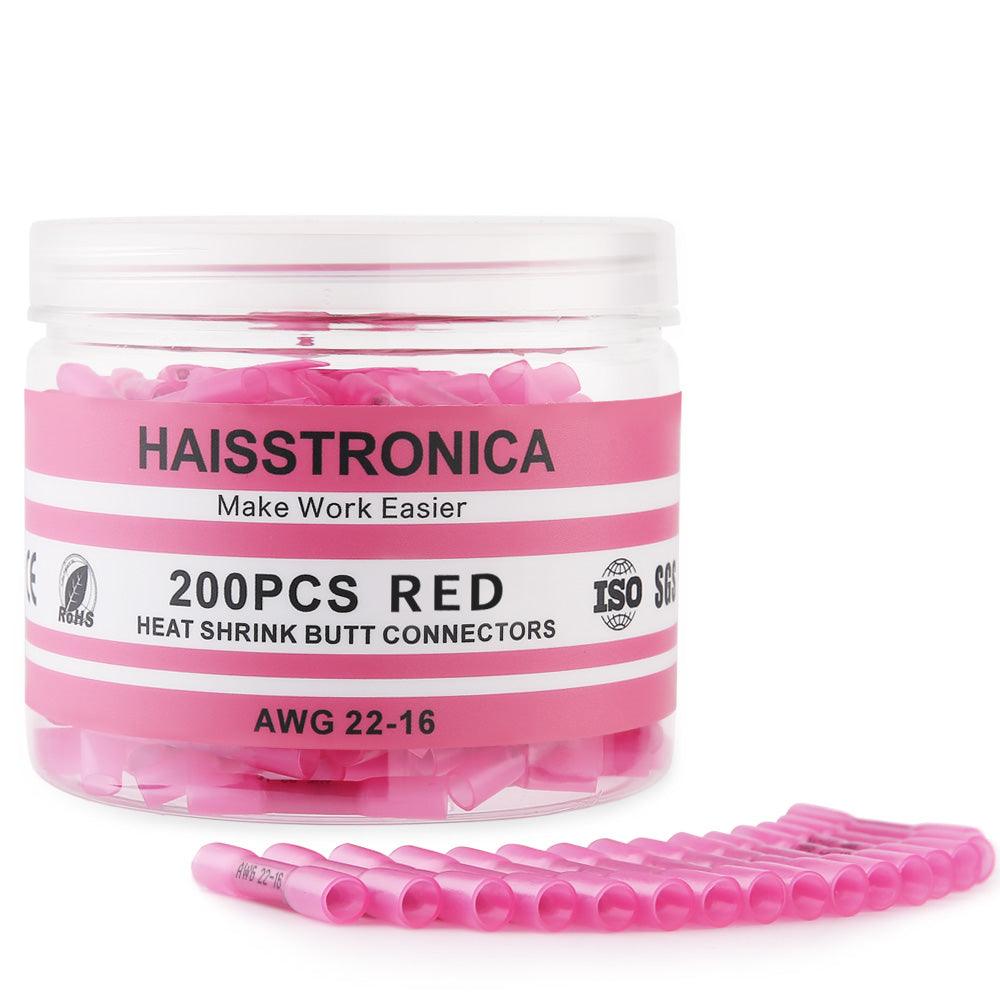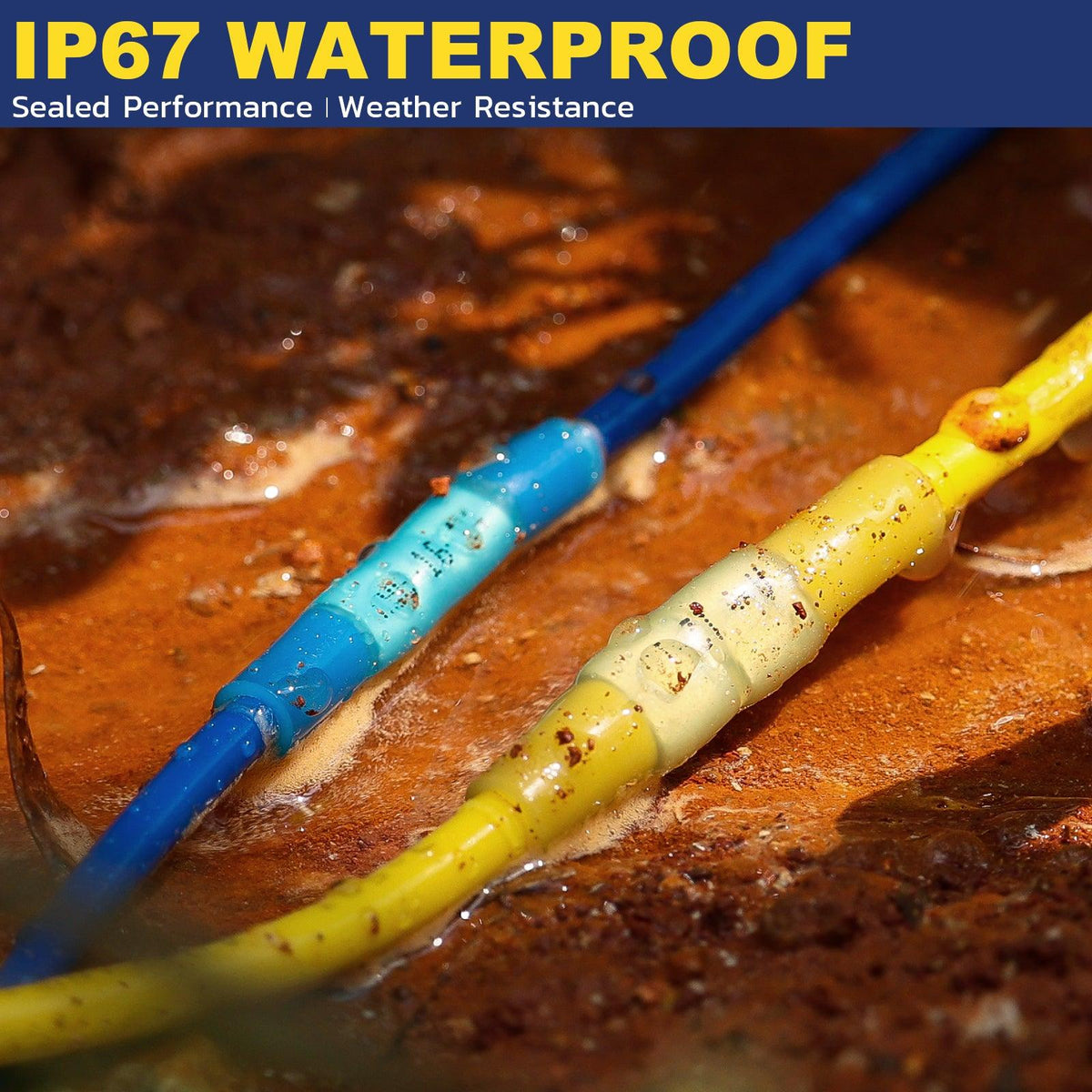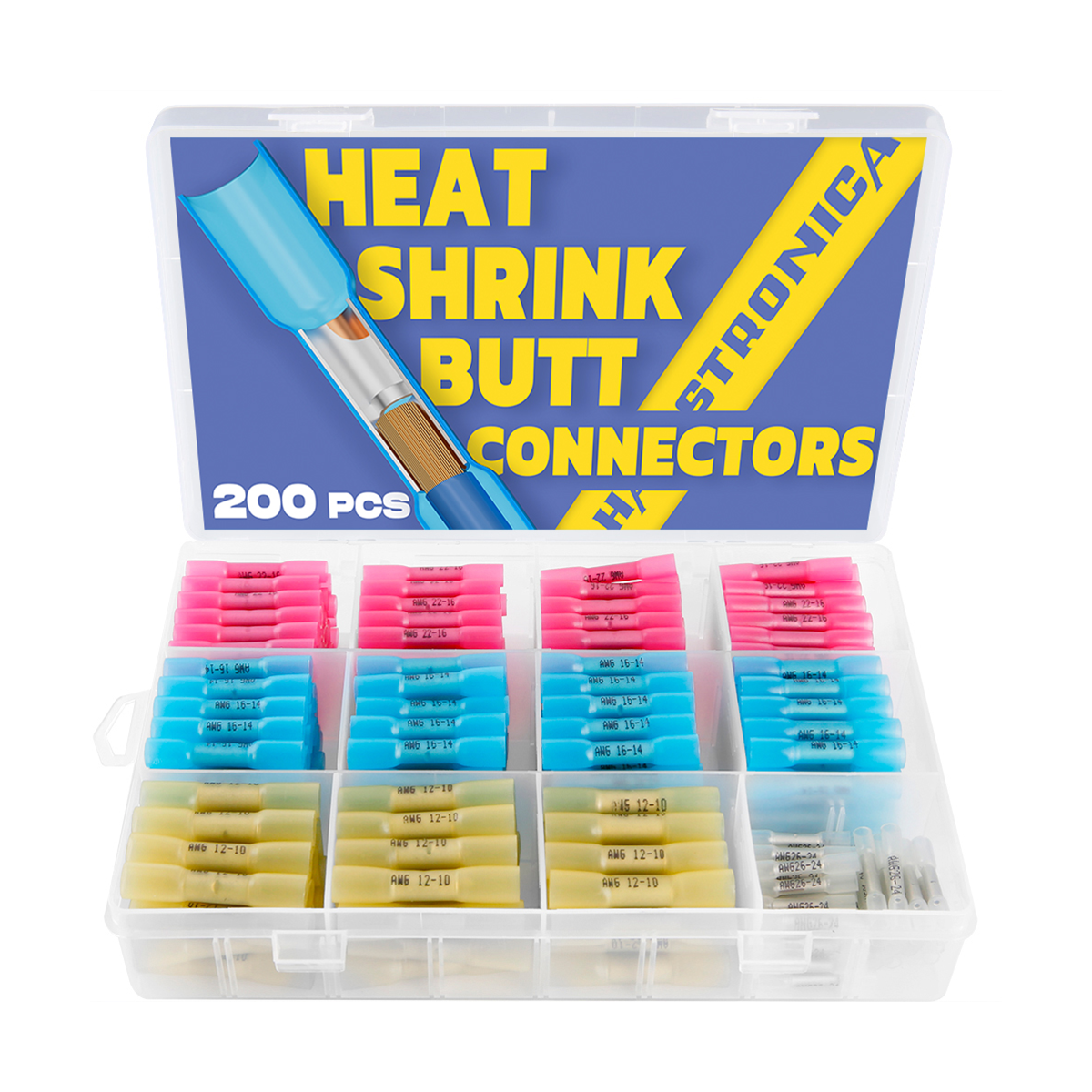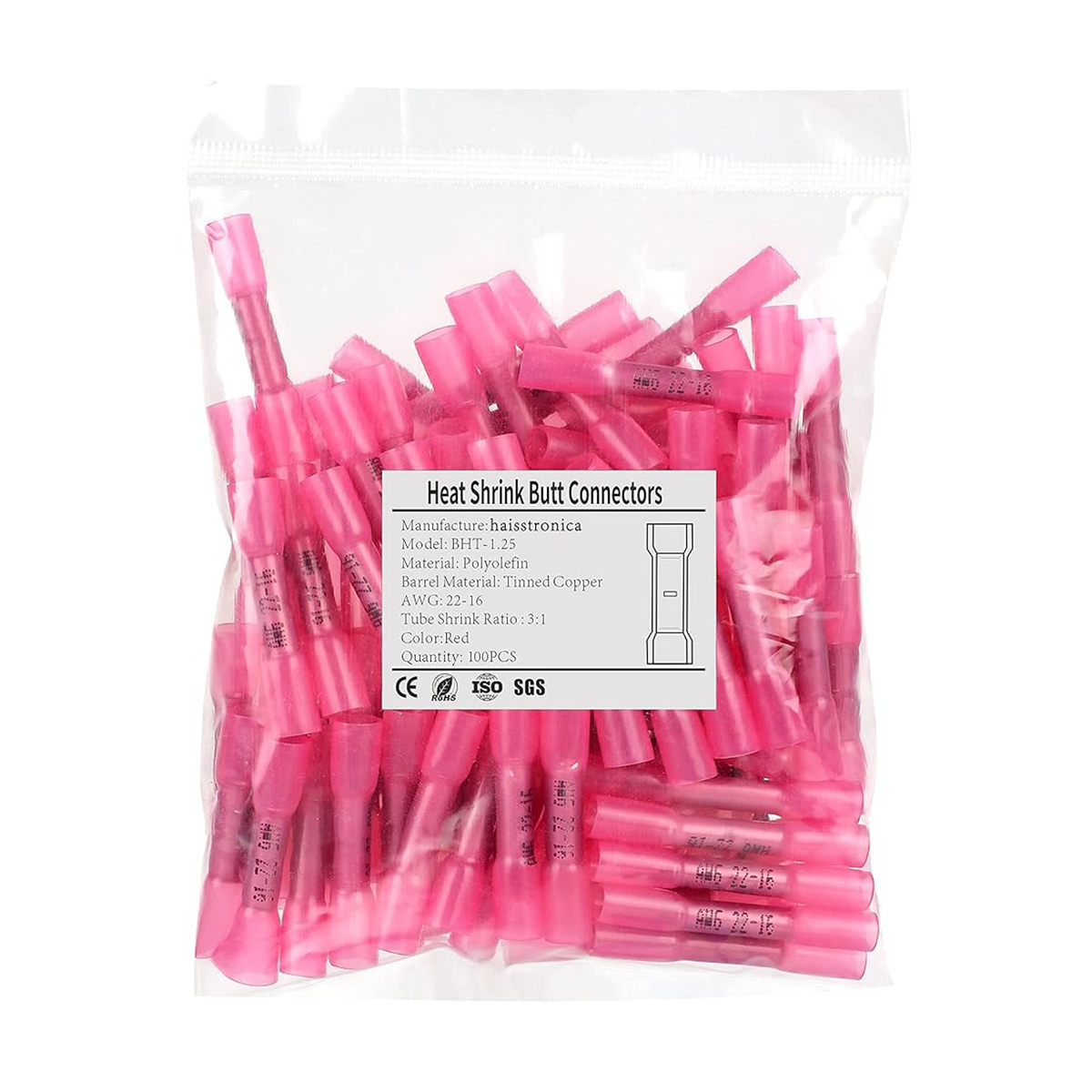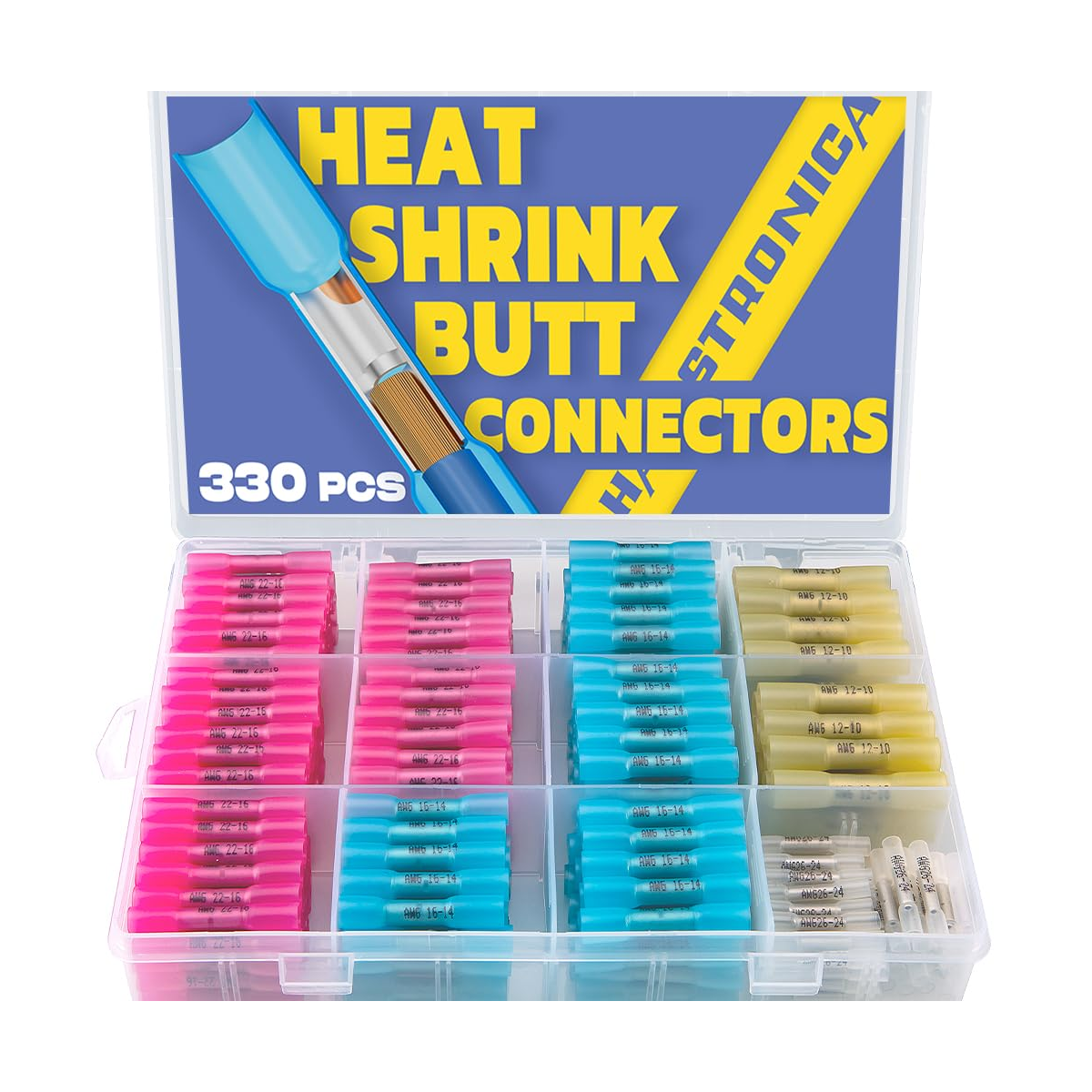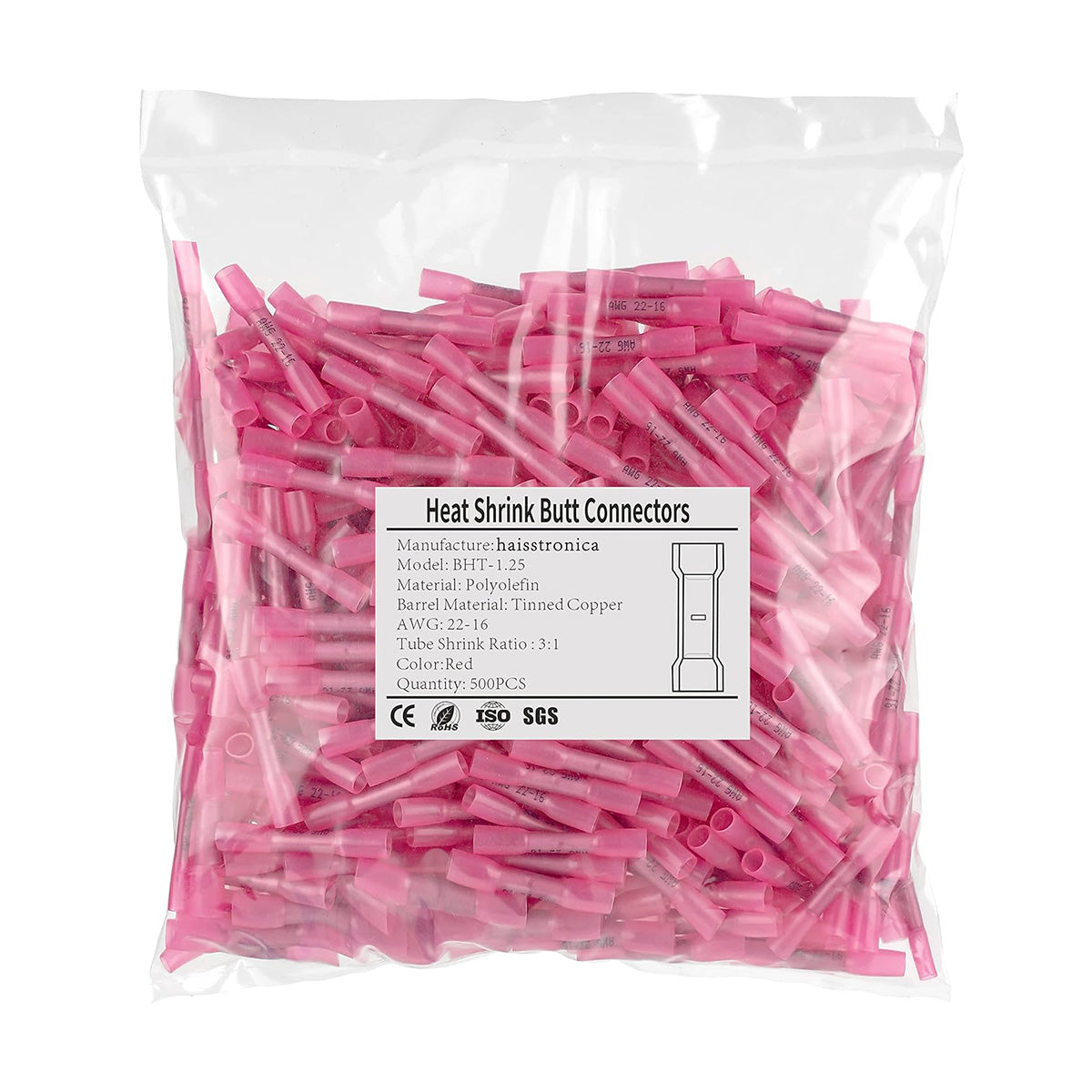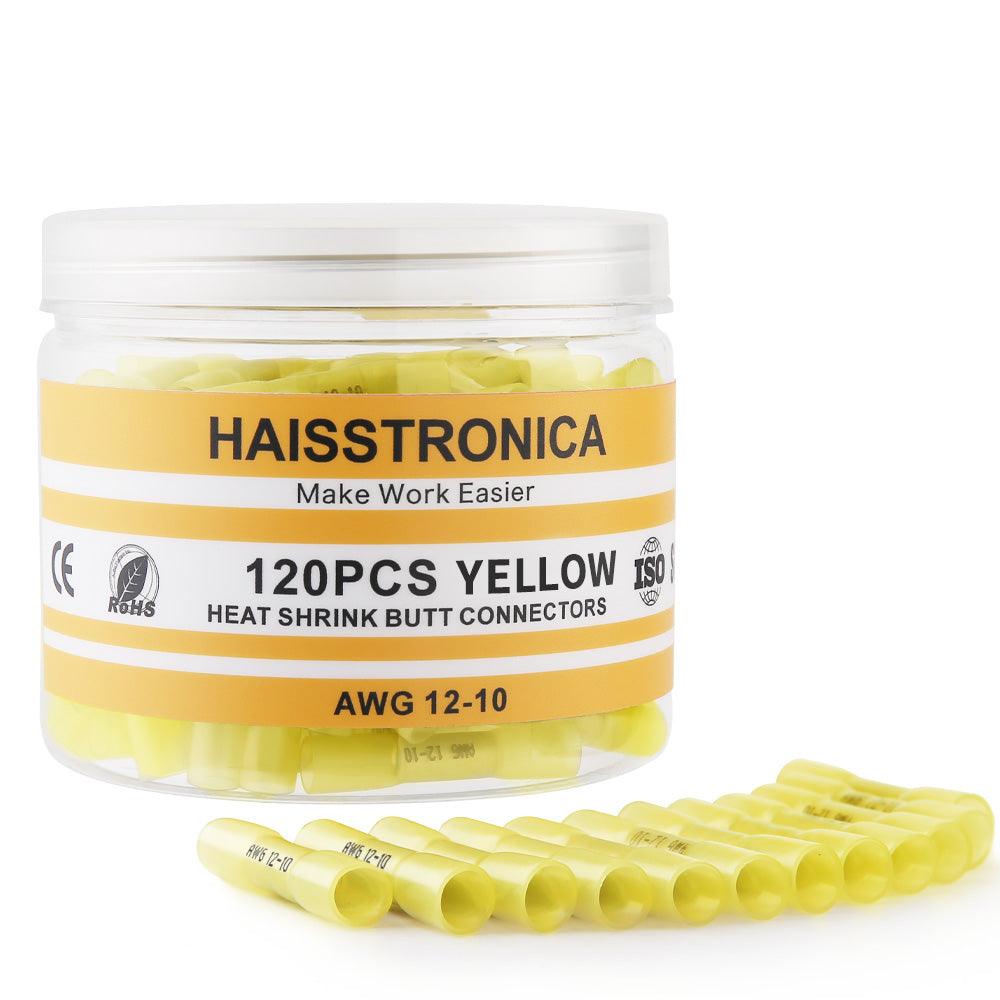Introduction : Les connecteurs bout à bout sont l'un des moyens les plus simples et les plus fiables de raccorder deux fils. Ce sont de petits connecteurs électriques bout à bout qui créent une épissure solide sans soudure. Leur nom vient de la façon dont les fils s'emboîtent les uns dans les autres à l'intérieur du connecteur, formant ainsi un chemin conducteur continu. Dans cet article, nous aborderons ce que sont les connecteurs bout à bout (et leurs nombreux noms), leur utilisation étape par étape, leurs applications courantes (du câblage automobile au câblage marin), des conseils pour choisir les bons connecteurs bout à bout et une foire aux questions. À la fin de cet article, vous comprendrez précisément leur fonctionnement et comment utiliser les connecteurs bout à bout thermorétractables pour une connexion sûre et durable.
👉 Améliorez votre câblage avec les connecteurs bout à bout thermorétractables à sertir électriques Haisstronica AWG 22-10 — conçus pour les connecteurs bout à bout de fils.
Que sont les connecteurs bout à bout ? (Définition)
Les connecteurs bout à bout , également appelés épissures bout à bout , connecteurs d'épissure bout à bout ou cosses bout à bout, sont de petits connecteurs tubulaires conçus pour épisser deux fils bout à bout . Généralement fabriqués en métal (généralement en cuivre étamé) avec un manchon isolant, ils permettent d'insérer un fil à chaque extrémité du « corps » du connecteur. Lors du sertissage, le corps métallique se déforme autour des fils dénudés et les serre fermement. Cela crée une liaison mécanique et électrique solide entre les fils, permettant au courant de circuler comme s'ils formaient un seul conducteur continu. En d'autres termes, les épissures bout à bout connectent les extrémités des fils à l'intérieur d'un manchon protecteur, préservant ainsi l'intégrité du circuit. Certains connecteurs bout à bout utilisent une simple isolation plastique (vinyle ou nylon), tandis que d'autres sont des connecteurs bout à bout thermorétractables dotés d'une gaine thermorétractable spéciale avec adhésif. Avec les connecteurs thermorétractables (parfois appelés connecteurs bout à bout à gaine rétractable ou épissures bout à bout de qualité marine ), le tube se rétracte et l'adhésif fond sous l'effet de la chaleur pour sceller l'épissure et la protéger de l'eau. Ces connecteurs bout à bout se thermorétractent autour du fil, créant ainsi une épissure bout à bout étanche une fois refroidis. Globalement, les connecteurs bout à bout (qu'il s'agisse de connecteurs électriques isolés de base ou de connecteurs thermorétractables avancés) offrent un moyen rapide et sans soudure de raccorder solidement les fils.
👉 Scellez chaque épissure avec les connecteurs bout à bout thermorétractables à sertir électriques Haisstronica AWG 22-10 — idéaux pour les connecteurs bout à bout de fils.
Comment utiliser les connecteurs bout à bout (étape par étape)
L'utilisation de connecteurs bout à bout est simple. Vous trouverez ci-dessous un guide simple pour épisser des fils avec un connecteur bout à bout. Ce guide est valable aussi bien pour les connecteurs bout à bout isolés que pour les connecteurs bout à bout thermorétractables (avec une étape de chauffage supplémentaire pour ces derniers) :
-
Préparez les fils : Débranchez l'alimentation de tout circuit sur lequel vous travaillez. Coupez et dénudez environ 6 mm d'isolant à l'extrémité de chaque fil. Veillez à utiliser la fente appropriée de votre pince à dénuder pour ne pas endommager les brins de cuivre. Torsadez délicatement les brins dénudés pour qu'ils restent bien nets.
-
Insertion dans le connecteur : Choisissez le connecteur de taille adaptée à votre calibre de fil (la plupart des connecteurs sont codés par couleur : rouge pour 22–18 AWG, bleu pour 16–14 AWG, jaune pour 12–10 AWG). Insérez une extrémité de fil dénudée de chaque côté du connecteur jusqu'à mi-chemin. Les fils doivent abouter au centre du corps du connecteur. Assurez-vous que tous les brins dénudés se trouvent à l'intérieur du tube métallique du connecteur.
-
Sertissage du connecteur : Placez le connecteur bout à bout dans un outil de sertissage adapté (idéalement une pince à cliquet avec une mâchoire de couleur assortie à la taille du connecteur). Alignez l’outil sur le corps métallique du connecteur (et non sur les extrémités isolées) et serrez fermement pour sertir . Le connecteur bout à bout se comprime autour du fil, créant un sertissage serré . Tirez légèrement sur chaque fil pour vérifier sa bonne tenue ; un sertissage correct empêche les fils de se défaire. (Conseil : Pour les connecteurs bout à bout isolés , utilisez l’encoche codée de la pince ; pour les connecteurs bout à bout non isolés , utilisez la section de sertissage nue appropriée.)
-
Application de chaleur (pour les connecteurs thermorétractables) : Si vous utilisez des connecteurs bout à bout thermorétractables , utilisez un pistolet thermique (ou une mini-chalumeau) pour rétracter le tube du connecteur. Effectuez un mouvement de va-et-vient uniforme le long du tube avec la source de chaleur. La gaine thermorétractable extérieure se contracte autour de l'épissure et la scelle , tandis que la couche adhésive intérieure fond et coule pour assurer l'étanchéité . Le tube devient semi-transparent et vous pourrez voir un peu de colle sortir aux extrémités ; ce n'est pas grave. Cette étape transforme un connecteur serti en un connecteur bout à bout étanche et résistant à l'humidité. (Si vous avez utilisé un connecteur isolé en vinyle/nylon, vous pouvez éventuellement le recouvrir d'une gaine thermorétractable séparée pour une protection supplémentaire.)
-
Inspectez la connexion : Laissez refroidir le connecteur (si vous avez appliqué de la chaleur), puis effectuez un dernier essai de traction sur les deux fils. Vérifiez visuellement qu'aucun fil dénudé ne soit exposé à l'extérieur du connecteur et que la gaine soit complètement rétractée (pour les modèles thermorétractables). Si vous disposez d'un multimètre, effectuez un test de continuité pour vous assurer de la solidité de la connexion électrique. Un connecteur d'épissure bout à bout correctement serti est robuste et offre une faible conductivité. Si un élément semble lâche, vous devrez peut-être le couper et refaire l'épissure avec un connecteur neuf. Les connecteurs bout à bout sont généralement à usage unique et ne peuvent pas être désserrés de manière fiable.
👉 Choisissez les connecteurs bout à bout thermorétractables à sertir électriques Haisstronica AWG 22-10 pour des connecteurs de fils bout à bout fiables.
Applications : Où utiliser les connecteurs bout à bout
Les connecteurs bout à bout sont utilisés dans de nombreux secteurs et projets de bricolage, où des fils doivent être raccordés bout à bout. Voici quelques exemples d'applications courantes :
-
Câblage automobile : Les connecteurs bout à bout sont largement utilisés en réparation de voitures et de camions, notamment pour l'installation de nouveaux systèmes audio ou la réparation de câbles défectueux. Ils résistent bien aux vibrations constantes du véhicule et empêchent les fils de se détacher. Par exemple, pour remplacer un haut-parleur défectueux, vous pouvez utiliser des épissures bout à bout pour connecter les nouveaux fils du haut-parleur au câblage d'origine. Ils sont également pratiques pour les dépannages rapides sur le bord de la route.
-
Électronique marine et bateau : Pour les bateaux, les jet-skis et autres applications marines, les connecteurs bout à bout étanches sont essentiels. Ces connecteurs (généralement thermorétractables ) forment un joint étanche qui protège la connexion de l'eau et de la corrosion. Ceci est essentiel pour les feux de navigation, les pompes de cale ou tout câblage exposé aux éclaboussures ou à l'humidité. La gaine thermorétractable adhésive garantit une épissure de qualité marine , même dans des conditions difficiles.
-
Projets électriques et de bricolage : Les connecteurs bout à bout sont pratiques pour les réparations et les projets électroniques. Ils permettent de réparer un cordon de lampe cassé, de rallonger un éclairage LED ou de réparer les fils d'un appareil électroménager. Ils offrent un moyen sûr et isolé de reconnecter les fils sans avoir à les tordre et à les scotcher (ce qui n'est pas très sûr). Par exemple, si un fil est accidentellement coupé trop court, un connecteur bout à bout permet d'y ajouter une rallonge. Grâce à leur facilité d'utilisation, les connecteurs bout à bout sont également très appréciés pour les kits électroniques et les projets de loisirs créatifs.
-
Audio et électronique : Que ce soit pour l'installation d'un amplificateur audio pour voiture ou d'enceintes home cinéma, les épissures bout à bout garantissent un signal clair et constant. Elles maintiennent les fils des haut-parleurs solidement connectés, ce qui est essentiel pour préserver la qualité sonore. Contrairement aux fils torsadés, une jonction de fils sertie bout à bout ne s'oxyde pas aussi rapidement et présente moins de risques de rupture, garantissant ainsi la fiabilité de vos systèmes audio.
👉 Obtenez des joints étanches et propres grâce aux connecteurs bout à bout thermorétractables à sertir électriques Haisstronica AWG 22-10 — parfaits pour les kits de connecteurs de fils.
Guide de sélection des connecteurs bout à bout (comment choisir)
Tous les connecteurs bout à bout ne se valent pas. Voici quelques conseils pour choisir le connecteur bout à bout adapté à vos besoins :
-
Type de connecteur : Déterminez si vous avez besoin de connecteurs bout à bout non isolés, isolés ou thermorétractables . Les connecteurs bout à bout non isolés sont de simples corps métalliques sans isolation (utiles si vous prévoyez de les recouvrir de votre propre gaine thermorétractable ou pour les applications à haute température). Les connecteurs bout à bout isolés sont dotés d'une gaine en plastique (vinyle ou nylon) intégrée pour une protection de base. Les connecteurs bout à bout thermorétractables (souvent appelés connecteurs bout à bout marins ou épissures bout à bout adhésives ) sont dotés d'un tube à double paroi (avec un adhésif fusible interne) qui se rétracte pour former un joint étanche sous l'effet de la chaleur. En général, utilisez des connecteurs bout à bout électriques isolés standard pour les utilisations intérieures/sèches, et choisissez des connecteurs bout à bout thermorétractables pour les connexions exposées à l'humidité, à la saleté ou aux vibrations.
-
Calibre du fil (taille) : Choisir la bonne taille de connecteur est essentiel pour un sertissage réussi. Les connecteurs sont généralement codés par couleur selon le calibre du fil . Les tailles courantes incluent les connecteurs rouges pour les fils de calibre 22 à 16 AWG, les connecteurs bleus pour les fils de calibre 16 à 14 AWG et les connecteurs jaunes pour les fils de calibre 12 à 10 AWG. (Certaines marques proposent même des connecteurs bout à bout blancs pour les très petits fils de calibre 26–24 AWG.) Adaptez toujours le connecteur à la taille du fil : un connecteur trop petit ne s'adaptera pas au fil, et un connecteur trop grand ne se sertira pas correctement. En cas de doute, achetez un kit de connecteurs bout à bout assortis de plusieurs tailles afin d'avoir le bon connecteur sous la main.
-
Facteurs environnementaux : Tenez compte de l'emplacement et de la manière dont la connexion sera utilisée. Pour les projets maritimes, automobiles ou extérieurs , utilisez des connecteurs bout à bout étanches (thermorétractables), car ils protègent contre l'humidité et la corrosion. Dans les compartiments moteur ou les zones à forte chaleur, assurez-vous que l'isolation du connecteur supporte la température (le nylon est plus résistant à la chaleur que le vinyle, et il existe des connecteurs bout à bout haute température spéciaux pour les conditions extrêmes). Si le câblage est soumis à de fortes vibrations (véhicules, machines), un connecteur bout à bout thermorétractable offre une décharge de traction supplémentaire une fois rétracté, assurant ainsi la solidité de la connexion.
-
Qualité et sécurité : Utilisez toujours des épissures bout à bout de haute qualité provenant d'un fournisseur réputé. Privilégiez les connecteurs homologués UL ou conformes aux normes électriques en vigueur, surtout pour les applications critiques. Les connecteurs bout à bout moins chers (mal orthographiés « connecteurs ») fabriqués à partir de matériaux de qualité inférieure risquent de se corroder ou de tomber en panne avec le temps. Investissez dans des connecteurs de qualité, dotés d'un corps en cuivre étamé et d'une isolation durable : ils garantissent une connexion solide et une longue durée de vie. Haisstronica, par exemple, propose des épissures bout à bout avec des âmes en cuivre étamé pur et des gaines adhésives, qui offrent une forte résistance à la traction (testée à 150 N) et une isolation fiable.
FAQ : Questions fréquemment posées sur les connecteurs bout à bout
Q1 : Les « connecteurs bout à bout », les « épissures bout à bout » ou les « bornes bout à bout » sont-ils identiques aux connecteurs bout à bout ?
R : Oui, tous ces termes désignent la même chose. Une épissure bout à bout , un connecteur d'épissure bout à bout , une cosse bout à bout ou même un connecteur de fil bout à bout sont simplement des noms différents pour un connecteur bout à bout . Certains disent même « épissures bout à bout » au pluriel. Ils désignent tous le même type de connecteur utilisé pour relier deux fils bout à bout. Ainsi, qu'un kit soit étiqueté « connecteurs bout à bout » ou « connecteurs d'épissure bout à bout » , il désigne la même catégorie de produits.
Q2 : Les connecteurs thermorétractables sont-ils vraiment étanches ?
R : Correctement sertis et chauffés, les connecteurs bout à bout thermorétractables créent une étanchéité parfaite autour de l'épissure. La gaine thermorétractable adhésive assure une étanchéité IP67 , empêchant ainsi l'eau, l'humidité et le sel de pénétrer dans la connexion. Ils sont donc parfaits pour une utilisation en milieu marin ou en extérieur. N'oubliez pas que les connecteurs bout à bout électriques standard en vinyle ou en nylon ne sont pas étanches à eux seuls ; seuls les connecteurs thermorétractables (ou l'ajout d'une gaine thermorétractable séparée) assurent une véritable étanchéité.
Q3 : Puis-je connecter plus de deux fils avec un connecteur bout à bout (par exemple un connecteur bout à bout à 3 voies) ?
R : Un connecteur bout à bout standard est conçu pour deux fils seulement (un à chaque extrémité). Si vous devez raccorder trois fils ou plus , plusieurs options s'offrent à vous : utiliser plusieurs épissures bout à bout (par exemple, épisser deux fils à un seul, puis épisser ce fil combiné à un autre, etc.), ou utiliser un connecteur d'épissure bout à bout abaisseur spécial. Les épissures bout à bout abaisseur (parfois appelées connecteurs bout à bout 3 fils ) sont conçues pour accueillir plus de deux conducteurs. Elles présentent souvent un corps plus large d'un côté pour accueillir plusieurs fils plus petits qui se rejoignent en un seul fil plus gros de l'autre côté. Ces connecteurs sont codés par couleur et des bandes indiquent les différentes sections de fil que chaque extrémité peut accepter. En résumé, il existe des connecteurs bout à bout permettant l'épissure de trois fils, mais veillez à utiliser le bon type (ou à envisager un répartiteur approprié) plutôt que d'insérer trois fils dans un connecteur standard à deux fils (ce qui n'est pas fiable).
Q4 : Les connecteurs bout à bout sont-ils disponibles en différentes tailles pour les fils de gros calibre (comme 8 AWG ou 4 AWG) ?
R : Oui, il existe des connecteurs d'épissure bout à bout robustes conçus pour les fils de gros calibre. Vous trouverez des épissures bout à bout de calibre 8 AWG et des connecteurs encore plus grands pour câbles de calibre 4 ou 2. Ces connecteurs sont généralement dépourvus d'isolation (juste un corps en cuivre épais) et sont parfois vendus comme connecteurs bout à bout pour batteries ou comme épissures de câbles de grande taille. Leur utilisation nécessite généralement une pince à sertir spéciale à fort effet de levier ou une pince à sertir hydraulique, car une pince à sertir standard n'est pas assez puissante pour de telles tailles. Après avoir serti un connecteur bout à bout robuste, il suffit de glisser une gaine thermorétractable épaisse par-dessus pour isoler l'épissure. Par conséquent, pour les applications à courant élevé comme l'alimentation audio de voiture, les câbles de panneaux solaires ou les connexions de batteries marines, assurez-vous d'utiliser un connecteur d'épissure bout à bout de taille adaptée à votre section de câble.
Q5 : Les connecteurs bout à bout peuvent-ils être utilisés sur des fils solides ?
R : Oui, vous pouvez utiliser des connecteurs bout à bout pour raccorder des fils de cuivre massifs, bien que le sertissage des fils massifs soit un peu moins souple que celui des fils multibrins. L'essentiel est d'utiliser un connecteur de taille adaptée au calibre du fil massif et de sertir très fermement. Les fils multibrins et massifs peuvent être épissés avec un connecteur bout à bout , à condition que le sertissage soit serré et sécurisé. En fait, de nombreux fils électriques domestiques (massifs) peuvent être raccordés avec des connecteurs bout à bout isolés , mais veillez à respecter les exigences du code de l'électricité (dans certains cas, un connecteur torsadé ou une autre méthode peut être préférable). Pour les appareils électroniques de bricolage, les fils de raccordement à âme massive peuvent tout à fait être raccordés avec des épissures bout à bout ; vérifiez simplement que la connexion est solide, car un fil massif ne se déforme pas et n'adhère pas autant qu'un fil multibrins sous la pression du sertissage.
👉 Construisez-le correctement avec les connecteurs bout à bout thermorétractables à sertir électriques Haisstronica AWG 22-10 pour connecteur de fil bout à bout.
Où acheter des connecteurs bout à bout (recommandation d'achat)
Pour une solution tout-en-un pratique, pensez au kit de connecteurs bout à bout thermorétractables Haisstronica (en boîte) . Ce kit comprend un large assortiment de connecteurs bout à bout avec isolation thermorétractable doublée d'adhésif, couvrant une gamme de calibres de fils allant de 26 à 10 AWG. Les connecteurs sont codés par couleur (blanc, rouge, bleu, jaune) pour une identification facile et sont livrés dans une boîte de rangement robuste. Avec un tel kit , vous disposerez du connecteur adapté à tous vos projets de câblage, qu'il s'agisse de travaux électriques automobiles, marins ou domestiques. Les connecteurs bout à bout Haisstronica utilisent des âmes en cuivre étamé et un tube à rétreint de 3:1 pour une fixation fiable et étanche. Avoir un kit de connecteurs bout à bout de qualité à portée de main peut vous faire gagner du temps et garantir que vos épissures de fils sont effectuées de manière professionnelle.
Utiliser des connecteurs bout à bout est un moyen simple et efficace de réaliser des connexions électriques sécurisées. Que vous répariez un feu arrière de voiture, que vous branchiez un bateau ou que vous installiez des éclairages chez vous, un sertissage efficace avec le connecteur bout à bout adapté assurera une connexion sûre et durable de vos fils. 🔌💡 Bon travail !
Nos meilleurs choix conviviaux
Fabriqués avec des corps en cuivre étamé pur à 99,9 %, ces connecteurs électriques offrent une résistance ultra-faible et des performances anti- oxydation . Le manchon adhésif 3:1 assure une étanchéité parfaite pour une jonction étanche et résistante à l'usure. Choisissez nos connecteurs bout à bout thermorétractables pour des épissures fiables et des résultats professionnels.
👉 Les installations plus rapides commencent avec les connecteurs bout à bout thermorétractables à sertir électriques Haisstronica AWG 22-10 — la solution idéale pour le sertissage des connecteurs bout à bout.


